






Danrich, 13, has great business
By Sylvester Brown Jr.
The St. Louis American
“Mom, can I start a luxury car dealership?’
Shay Danrich was a bit taken aback by her son, Joshua’s question.
“No, Joshua, you can’t have a luxury car dealership at 10-years old,” Shay curtly replied.
Shay, a single mother with a Bachelor of Science in Business Administration degree works as a business consultant. Her only son, Joshua, who attended meetings with Shay and her clients since he was a toddler, grew up in an entrepreneurial environment.
One day he confronted his mother and said, “Mom, you’re always helping people start businesses; when are you going to help me start mine?”
His question was so “sincere and from the heart,” Shay recalled, “I couldn’t do anything but honor his

Joshua Danrich was ready to debut his product in 2019. He and his mother hit the event circuit, selling “Mr. Fresh” fragrances at outdoor markets and special events.
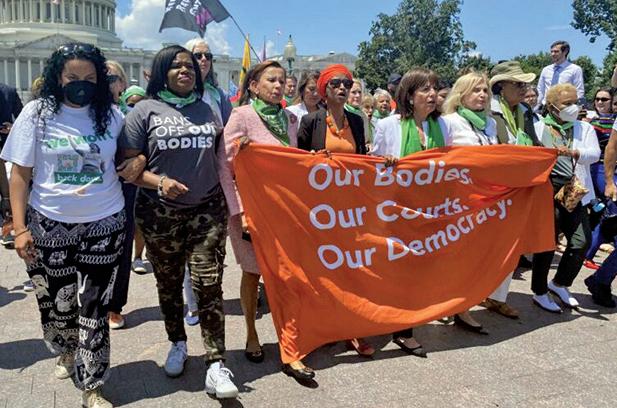
By Jennifer Shutt States Newsroom
or severely limit abortion services. The 17 members of the U.S. House of Representatives and abortion rights advocates began walking together from the steps of the Capitol toward the Supreme Court building around 1 p.m.
Fifteen minutes later, they sat down in an intersection in front of the fenced-off Supreme Court building as a U.S. Capitol Police officer warned they were involved in illegal demonstration activity and would be arrested if they didn’t move. A few minutes later, as lawmakers and protesters chanted in support of abortion
rights, U.S. Capitol Police officers began leading them away to a shaded, grassy area nearby where they would be charged with crowding, obstructing or incommoding under District of Columbia law and told they needed to pay a $50 fine.
Thirty-five people were charged, including 17 Members of Congress, according to the Capitol Police. Those arrested included Democratic Reps. Alma Adams of North Carolina, Madeleine Dean of Pennsylvania, Cori Bush of Missouri, Rashida Tlaib and
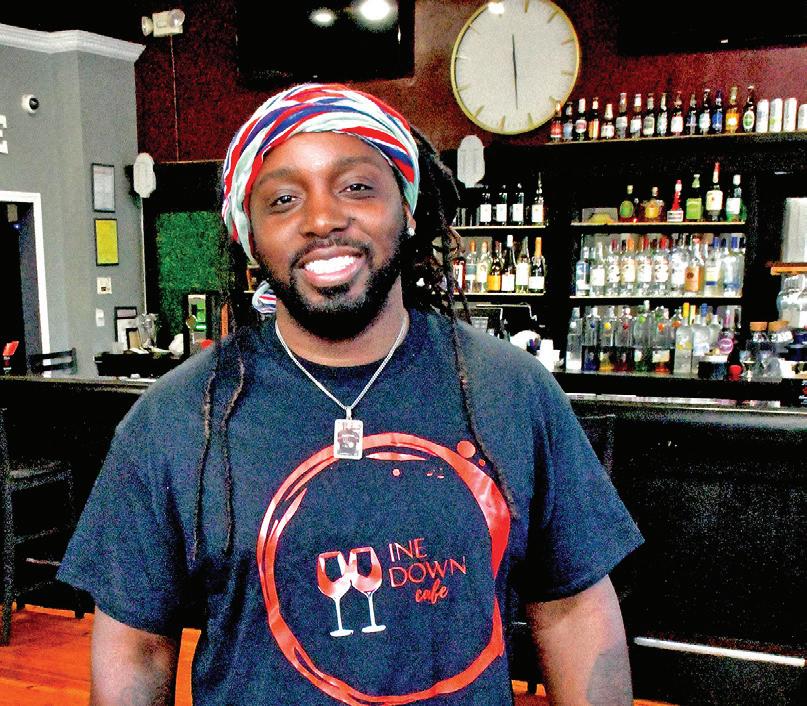
By Ashley Winters The St. Louis American
Rochelle D. Smith, M.S., who will become Saint Louis University’s (SLU) new Vice President for Diversity and Innovative Community Engagement, is no stranger to St. Louis or to leading and developing robust diversity programs. Her resume extends from the Midwest to the Northeast. This fall, Smith will lead the University’s Division of Diversity and Innovative Community Engagement (DICE), which is home to the Center
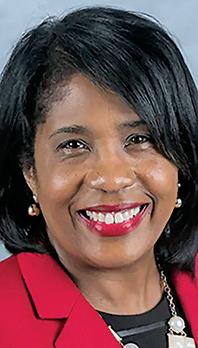
interim vice president for diversity and innovative community engagement since August 2021. “I am humbled and honored to join the SLU family in this important role,” Smith said. “I look forward to working alongside the DICE team and building upon the legacy of my predecessors.”
By Maya Pottiger

decline in public school enrollment since 1943, according to the National Center for Education Statistics’ 2022 Condition of Education report. But the decline wasn’t seen everywhere. Charter schools actually saw considerable growth during the pandemic school years.
According to a 2021 analysis by the National Alliance for Public Charter Schools, charter

Gospel singer Kim Burrell publicly scrutinized for distasteful sermon remarks
One thing about Kim Burrell is she will always speak her mind despite the consequences. No stranger to public scrutiny, the gospel singer has once again trended for her unpopular opinion.
In a current clip on TikTok, Burrell is heard explaining the importance of vetting people before becoming friends. However, it’s her phrasing that has everyone up in arms.
“Sometimes before we get friends, we have to do an interview,” she says to the congregation. “How long have you been broke? How long have you changed your name on your light bill? Do you live in a trailer home or house? It’s not about status or material things, it’s just about choices.”
Her brief speech before singing “Daily I Shall Worship Thee,” went further off the rails with her making light of COVID-19 safety protocol and insulting people’s physical appearances.
“Who likes to be told you just ugly?,” she said. “All of you are beautiful, I haven’t chosen anyone to be ugly yet. You all look great,
most of you have on hats to cover that [your ugliness] anyway.”
This isn’t the first time Burrell has been criticized for her remarks.
In 2019, she praised fellow gospel artist Le’Andria Johnson and discredited Fantasia’s vocal ability in the same sentence.
Her biggest backlash came in 2017 when she referred to homosexual people as perverted. Her disparaging remark led to her radio show and an appearance on “The Ellen DeGeneres Show” being canceled.
Active shooter forces Craig Robinson to evacuate Charlotte comedy club
Actor Craig Robinson was preparing for a performance at a comedy club in Charlotte, North Carolina, on Saturday when an “active shooter” compelled him to evacuate.
He shared a video on Instagram explaining he was transported from The Comedy Zone to a Big Time Rush concert next door after someone reportedly fired shots.
“It was wild,” Robinson said. “I was in the green room and they’re like, ‘Everybody, get out!’ It was a moment for sure.”
Toward the end of the video, someone told him the suspect was arrested.
Police were called around 9 p.m. in response to a call at The Comedy Zone about an “assault with a deadly weapon
with no injury call for service.”
“Upon arrival to the scene, officers located several victims who advised that the listed suspect pointed a firearm at them and made threats of bodily harm. The listed suspect discharged a firearm into occupied property,” the statement reads. “The listed suspect was in possession of a firearm and is a convicted felon.”
Police identified Omar McCombs, 36, as the suspect he was arrested and taken to the Mecklenburg County Jail early Sunday morning.
Read more details about the incident on USA Today’s website.
Rolling Stone reports The Delfonics lead singer and co-founder, William “Poogie” Hart, died Friday, July 15, 2022 from complications during a surgery. He was 77.
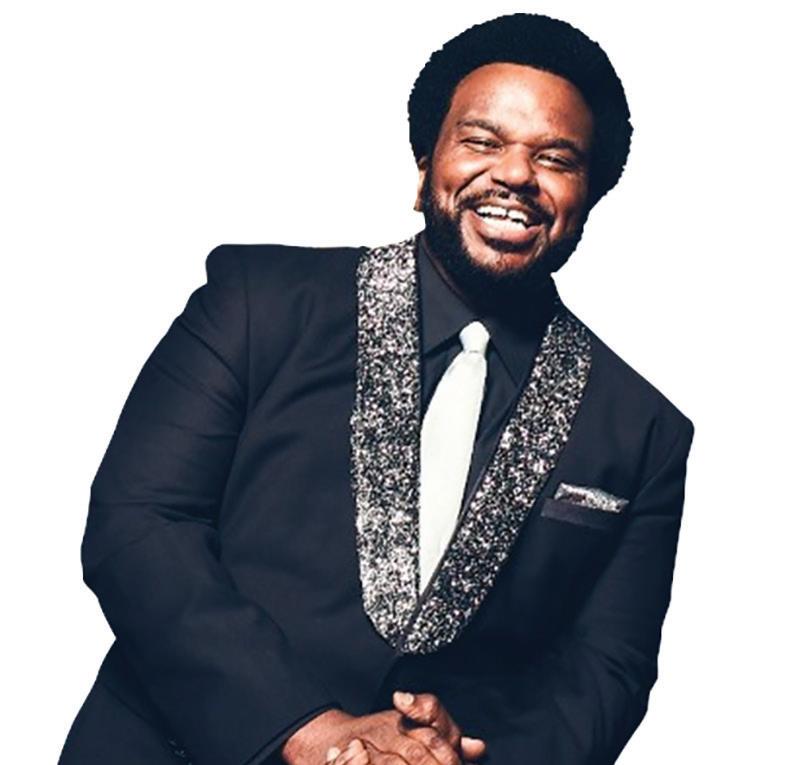
“His body might not be here, but his music will live forever,” his son Rolling Stone. He was a great man, he loved his family, he loved God, and he just loved people. Great heart, great spirit. That was my dad.”
The Delfonics rose to popularity during the 1960s-1970s with chart topping hits and fan-favorites “La-La (Means I Love You),”
“Ready or Not Here I Come (Can’t Hide From Love),” and “Didn’t I (Blow Your Mind This
Time).” Hart co-wrote most of their hits with producer Thom Bell
iHeartMedia exec
Tanita Myers dead at 49
Tanita Myers, Vice President of News Operations iHeartMedia’s Black Information Network (BIN), died on Wednesday, July 13, 2022. She was 49.
“We are a better organization because of her dedication to our mission, and we are better humans because of her love, her humor, and her spirit,” BIN President, Tony Coles said in a written statement. “While she took great pride in her work, it was her friends and family who brought her the most joy. Tanita’s smile always got a bit brighter when she spoke about her mom and her son Brandon.” Inside Radio reports Myers was transported to Tulane Hospital in New Orleans after suffering from a medical emergency. She was then rushed to ICU. She later passed away. Myers joined iHeartMedia’s Black Information Network in 2020 after working with Reach Media for 15 years as Senior Director of Radio Operations. She previously worked as Director of Operations for “The Tom Joyner Morning Show” and Executive Producer of “The Rickey Smiley Morning Show.”
Sources: Vibe, Hip Hop DX, Hot 97, Rolling Stone, Black Enterprise, Inside Radio, TIME, TikTok. Madame Noire, USA Today













































By Rebecca Rivas Missouri Independent
The name “Homer G. Phillips Hospital” is still spoken with reverence, not only in St. Louis’ Black community, but across the country.
Opened in 1937, it was the only public hospital for Black St. Louisans until 1955.
It was also a training facility, where Black doctors and nurses from around the world came to complete their medical residencies. By 1961, the hospital had trained the largest number of Black doctors and nurses in the world.
“Several nurses came from rural, impoverished backgrounds and went on to get jobs all across the country,” said author and historian Candace O’Connor in a March interview with the St. Louis American “Because all you had to do was say, ‘I’m from Homer Phillips,’ and they would say ‘you’re hired.’”
Despite years of community protests, the city defunded and closed the hospital in 1979. Now more than 40 years later, the name Homer G. Phillips Hospital is at the heart of protests again.
On July 11, the Homer G. Phillips Nurses’ Alumni Inc. filed a federal lawsuit against St. Louis developer Paul McKee Jr. for trademark infringement.
It’s the latest in a series of attempts since 2020 to stop McKee from naming his proposed three-bed health facility the “Homer G. Phillips Hospital.”
McKee proposes to build the $20.5 million hospital project at the site of the former Pruitt-Igoe housing project, and it’s set to receive $8 million in public funding.
“We are 1,000% opposed to Paul McKee stealing the name of this legacy,” said Zenobia Thompson, who served as a head nurse at Homer G. Phillips and who helped lead the unsuccessful fight in the 1970s to keep city leaders from closing the iconic Black teaching hospital.
The lawsuit states that the alumni group’s name is trademarked, and the new health center’s name will infringe on that trademark.
“Under our interpretation of the law, if the name of the health center is confusingly similar to or implies association

2 Democratic primary, Steve Roberts, also faced some heat for being slow to stand with the coalition. but has since publicly stated he opposes the name McKee’s proposed hospital will be located within his NorthSide Regeneration development footprint, which covers much of North St. Louis and was originally awarded a $390 million TIF in 2009.
In June 2018, city officials attempted to end the development agreement for the NorthSide Regeneration project. The default notice that the city issued to McKee stated, “After a decade, the promised redevelopment has not come, nor is there any indication that it will.”
Still today, much of McKee’s redevelopment plans for North St. Louis have not been achieved.
with my client, then we believe our claim is valid,” said Richard Voytas Jr., who is representing the group.
McKee’s lawyer, Darryl Piggee, told The Independent Tuesday that plans have not changed, but didn’t want to comment further. He had not yet seen the lawsuit.
In December, the St. Louis Board of Aldermen passed a resolution deeming the health center’s name “inappropriate cultural appropriation.”
Congresswoman Cori Bush and Mayor Tishaura Jones issued a joint statement shortly after.
“Profiting off of Homer G. Phillips’ name on a small 3-bed facility that will fail to meet the needs of the most vulnerable in our communities is an insult to
Homer G. Phillips’ legacy and the Black community,” they said.
They urged McKee to listen to former Homer G. Phillips nurses, advocates, health care workers and residents who are demanding he change the name.
“There is not a major current political leader in the city that has not called on Mr. McKee to change the name,” said activist Walle Amusa, who is part of a coalition fighting against the name. “Only the arrogance of privilege or outright racism will put somebody like that in a position of going ahead and essentially trademarking the legacy of a community.”
Former congressman Lacy Clay, who had a working relationship with McKee, came under fire during the last
congressional election when he was silent on the issue. Amusa said he didn’t help to orchestrate a meeting between McKee and the coalition opposing the name.
Bush, who is a nurse herself and was challenging Clay, stood and fought beside the former nurses.
“I stand in solidarity with the doctors and nurses and community members to say, ‘No,’” Bush said during a 2020 interview. “I would love our congressman to stand with the people and not with his buddies.”
It was a blow to Clay’s campaign, as Homer G. Phillips is one of the most important institutions in the city’s AfricanAmerican history.
Bush’s challenger in the Aug.
Amusa notes that when Homer G. Phillips was operating, the surrounding neighborhoods and businesses flourished. It was a dream that Homer G. Phillips himself, the attorney and civil rights leader who led the fight to get public funding for the hospital in 1921, didn’t live to see. He was murdered in 1931, and construction on the building began a year after Phillips’ still unsolved murder.
“The community is saying, ‘Change the name,’” Amusa said. “They’re not saying, ‘Don’t have a clinic.’ Don’t trivialize the legacy, the struggles, the blood, sweat and tears of Black people in this community. It’s a very simple demand.”
Rebecca Rivas covers civil rights, criminal justice and immigration. She has been reporting in Missouri since 2001, most recently as senior reporter and video producer at the St. Louis American, the nation’s leading African-American newspaper.
Rebates and financing
Network of trusted contractors
Find a natural gas contractor who offers services in your area.
The stakes in the upcoming mid-term elections couldn’t be higher for democracy and basic human and voting rights in this country and for African Americans in particular. Clearly the Republican Party itself has recklessly followed Donald J. Trump and has become an existential danger to the country and its governing institutions. These are tumultuous and dangerous times with hard earned rights being slowly and intentionally taken away.
House Speaker Nancy Pelosi said rightly last week that Republicans have become a deadly threat to the country, saying “the Republicans are not capable of governing a democracy.”
Pelosi is right when she issued a warning that Republicans have followed Trump’s incessant lying, cheating and corruption that have help stoke the divisiveness and turmoil in the country today. That means Democrats have an opportunity to take the high ground of truth, ethics and fair play. But that strategy must also be pursued with determination and resolve.
In Missouri there is an interesting situation where this red state is widely expected to swamp Democrats again. But there is no certainty in politics. To combat and turn this alarming outcome around, Democrats must come up with simple, but emotionally charged messaging that hits the gut and makes their voters want to turn out. This state votes heavily Republican because their voters are motivated (mostly stirred by fear and grievance) and show up at the polls, not because they greatly outnumber Democrats.
Black voters must understand that so many rights they have taken for granted for years are in real danger of being taken away.
n
Since Black voters are an essential core of the Democratic Party, they must show up or the far right wing Republican revolution stirred in the U.S. Supreme Court’s recent session will be just the beginning of drastic policy changes that would be devastating for African Americans.
The primary election will be held on August 2 to determine who will be the Democratic and Republican U.S. Senate candidates in the November 8 general election.
The most important questions for Black Missourians in the primary election is which of the two leading Democratic candidates are most aligned with our interests and concerns and who has the best chance to win in November. First, we can’t afford to waste our votes on hopeless candidates who have no chance to win or pay attention to irrelevant issues about who went to a debutante ball many years ago.
November is likely to be difficult for any Democrat running statewide to win, but it can be done. (Who expected that we would see two Democratic senators come from red state Georgia, Their victories give Democrats a numerical majority in the U.S. Senate). The Democratic
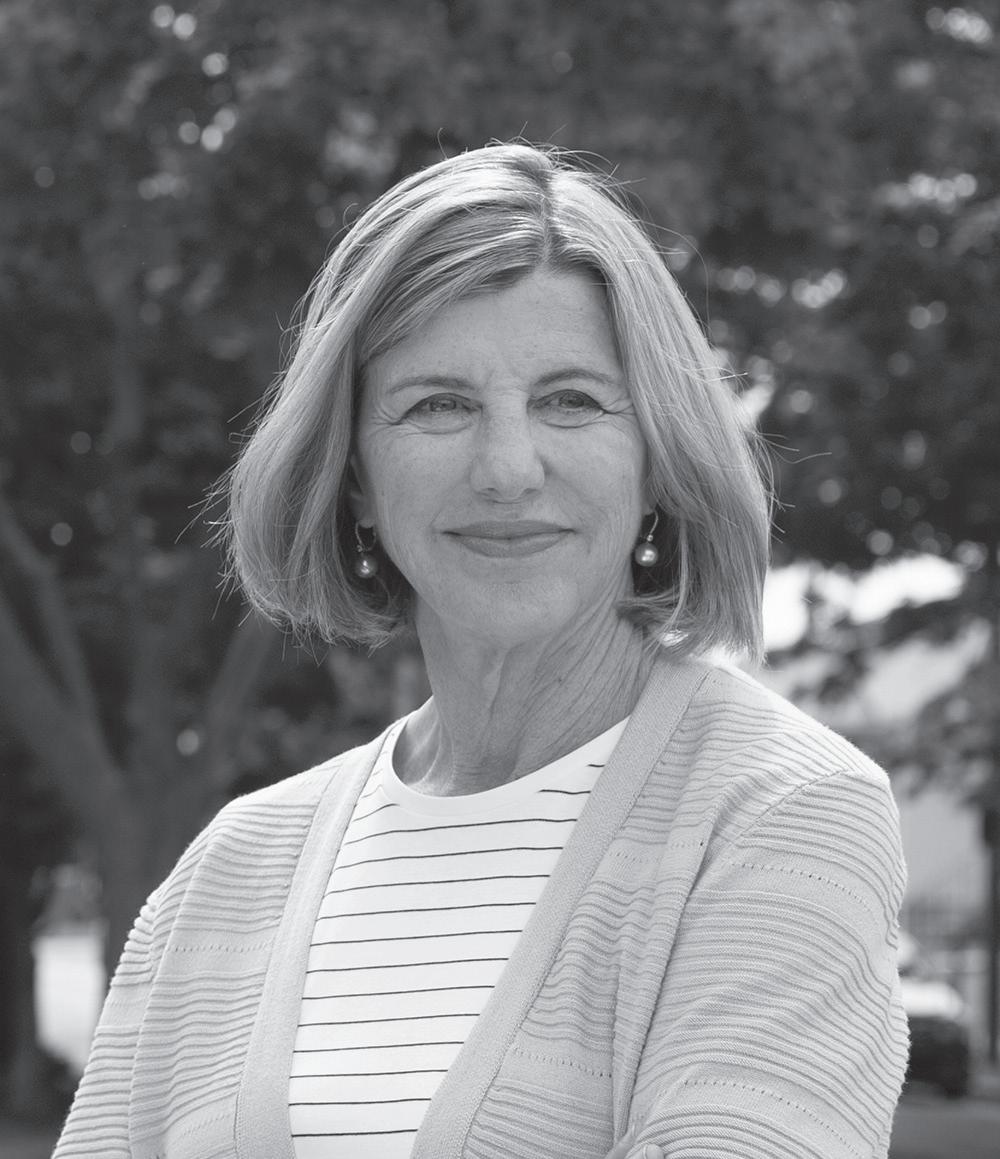
candidate who has been forthright and trustworthy in their campaign position (unlike Republican nominees for the U.S. Supreme Court who quickly pivoted from their declared position on precedent as soon as they got confirmed) is Trudy Busch Valentine. She is a wealthy woman, but so are Democrats Pelosi and Diane Feinstein. She filed on the last day because she wanted to have someone run who shares her values. She is an inexperienced politician but she is strong, firm and outspoken in her convictions.
Not content with a life of luxury and ease that was available to her, she chose to become a nurse with its physical hardships, workloads and emotional demands. She made a choice driven by compassion and a desire to serve others. Moreover wealth has not insulated her from personal tragedies and suffering nor diminished her concern for others beyond herself.
In contrast, her major opponent has sought to offer the electorate some Republican-lite positions. His campaign has not created a choice that strongly rebukes the bombastic politics of the Trumpist Republicans.
We, along with other like-minded voters, need to use our considerable ballot power to help elect someone who would work to create a real alternative to the unmitigated disaster this country faces.
We face a critical decision that will make a difference in our everyday lives and our loved ones in a time of great national peril. We strongly urge a vote for a tenacious, trustful and empathetic woman, Trudy Busch Valentine, in the August 2 Democratic primary.

By Ben Jealous
George Floyd was murdered by a Minneapolis police officer just over two years ago. His killing sparked a movement to end unjustified police killings and racist law enforcement practices. Sadly, the killings have not stopped. The George Floyd Justice in Policing Act was blocked by Senate Republicans last year. The struggle continues in communities large and small.
During racial justice protests that sprung up after video of Floyd’s murder spread around the world, millions of people spoke his name as they demanded accountability and justice. Now, a remarkable book examines Floyd’s life and death in the context of our history and what one of the authors calls the “complex, tangled web” created by racism in this country.
“His Name Is George Floyd: One Man’s Life and the Struggle for Racial Justice” was written by Washington Post reporters Robert Samuels and Toluse Olorunnipa. It draws on the reporting of their colleagues and on intimate interviews with Floyd’s family, romantic partners, and circle of friends.
At a time when politicians are making it illegal for educators to acknowledge that systemic racism exists, Samuels and Olorunnipa document in painful detail the ways in which racially discriminatory policies on housing, education, health care, addiction, policing and more contributed to “a life in which Floyd repeatedly found his dreams diminished, deferred, and derailed—in no small part because of the color of his skin.”
“For example,” Samuels says, “you could not disentangle police departments’ disproportionate use of force against African Americans
from the junk science that is still taught about black people being more resistant to pain. We could not ignore that those same instincts led to the inadequate mental health treatment in George Floyd’s life, nor could we separate that society both encouraged George Floyd to bulk up to pursue his athletic dreams and then stereotyped him as dangerous when he was off the field.”
The book doesn’t try to make Floyd a saint. It doesn’t have to. He was a human being. He did nothing to deserve being murdered on the street by an abusive police officer who shouldn’t have been wearing a badge.

“His Name Is George Floyd” is worth reading for many reasons. It gives us a fuller picture of the person George Floyd was. It introduces us to many people who loved him and sought a measure of justice for his murder. And it points to some important facts about policing in this country.
One is the need for accountability. Chauvin had a record of violent behavior. When abusive cops are not held accountable, more people will be subjected to their violence.
Another point is that policing is a local issue requiring local solutions. National policies, like those in the George Floyd Justice in Policing Act, can help. But holding violent cops accountable, getting them off the streets, or better yet, preventing them from getting hired in the first place, all require change at the local level.
People For the American
Way spent the two years since Floyd’s murder developing a road map for transforming public safety. We looked at the research. We talked to criminologists, public officials, clergy and other community activists, and members of law enforcement. “All Safe: Transforming Public Safety” is a guide for public officials and community activists seeking to make their communities safer. Among the essential steps to make policing more just and more effective at the same time: improving recruiting to weed out potentially dangerous cops, holding violent officers accountable, and getting unfit officers off the force. Also, importantly, restructuring public safety systems to reduce the unnecessary involvement of armed officers in situations where they are not needed and for which they are not trained is good for cops as well as communities.
The authors of “His Name Is George Floyd” describe optimism in the face of our history as both a defense mechanism and a means of survival. I am optimistic that we can end unjust police killings. I am optimistic that we can build the uncomfortably large coalitions it will take.
“Our book makes the argument that if we can demonstrate step-by-step how this country’s history with racism continues to shape people today, then we can continue the good work of dismantling systemic racism,” Samuels told me in an email. “We have to connect the theory with the practice.”
That job belongs to all of us. We know what kind of changes will make our communities safer. Let’s organize, city by city and town by town, to make it happen. Ben Jealous serves as president of People For the American Way
By Jesse L. Jackson Sr.
Will Donald Trump be held accountable for the attack on the U.S. Capitol on Jan. 6, 2021, and what was a multilayered conspiracy to overturn the results of the presidential election?
Attorney General Merrick Garland has stated that, “We’re just going to follow the facts wherever they lead … to hold all perpetrators who are criminally responsible for January 6 accountable, regardless of their level, [or]their position…”
The House Select Committee to Investigate the January 6th Attack has systematically revealed the facts, confirming what Republican Rep. Liz Cheney stated when she announced she would vote to impeach Donald Trump:
“On January 6, 2021, a violent mob attacked the United States Capitol to obstruct the process of our democracy and stop the counting of presidential electoral votes. This insurrection caused injury, death and destruction in the most sacred space in our Republic…,” Cheney said.



“The president of the United States summoned this mob, assembled the mob, and lit the flame of this attack. Everything that followed was his doing. None of this would have happened without the president,” she said. “The President could have immediately and forcefully intervened to stop the violence. He did not. There has never been a greater betrayal by a president of the United States of his office and his oath to the Constitution.”
The committee’s investigation has confirmed what Senate Republican Leader Mitch McConnell stated: “The mob was fed lies. They were provoked by the president and other powerful people, and they tried to
use fear and violence to stop a specific proceeding of the first branch of the federal government which they did not like.”
This is a question of treason, a charge that should not be made lightly.
The Constitution defines the crime: “Treason against the United States shall consist only in levying War against them, or in adhering to their Enemies, giving them Aid and Comfort.”

Do Trump’s actions meet the test of treason? Professor Carlton F.W. Larson, author of “On Treason: A Citizen’s Guide to the Law” notes that the framers of the Constitution had “a very specific image in mind — men gathering with guns, forming an army and marching on the seat of government.” Larson notes that few events in American history have matched that description as clearly as the sacking of the Capitol on Jan. 6. Their purpose assaulted the very heart of democracy: trying to stop the congressional proceeding that would formally certify the transfer of power following a democratic election. As Larson noted, “At some point, you have to say, if that’s not levying war against the United States, then what on earth is?”
The Justice Department has prosecuted over 800 people who participated in the attack on the Capitol. The most serious charges were directed at leaders of the Proud Boys and the Oath Keepers, gangs that conspired to breach the Capitol in order to stop the proceed-
ings and possibly kidnap or kill public officials. They were charged, and some have pleaded guilty to, seditious conspiracy. They thought they were doing the bidding of Trump.
Reviewing the evidence in a hearing on whether to honor the subpoenas of the committee, a federal judge found that Trump had “most likely” committed at least two crimes: obstructing an official proceeding and engaging in a conspiracy to defraud the United States. He was not asked to rule on whether Trump had committed treason. Prosecuting a former president is something that no prosecutor would take on lightly. A trial would no doubt be a bitter national trauma.
Yet, the very essence of the rule of law is that no person — not a governor or a general, a billionaire or an oligarch, or even a former president — is above the law.
Trump’s responsibility for the crimes that occurred is clear. And worse, he not only has expressed no remorse for his actions, he has spread the Big Lie relentlessly, and enlisted partisans across the country to attack election officials, change election laws, and leave the country more vulnerable to another assault on democracy. Accountability under the law serves as a deterrence for those who would seek to violate it in the future.
That is why the Justice Department has prosecuted 800-plus perpetrators with more to come. And that is why the attorney general must follow the evidence and bring to justice all those responsible for the attack, including the undeniable instigator: Donald Trump.

share their message of change and hope with the community. These young advocates again share their message of peace, love, and justice through songs and handmade signs.”
Midtown Community Services [MCS] will host the second of its annual Children›s Peace Parades at 10 a.m. Thursday July 28.
The event, which is in its 33rd year, begins at Midtown’s headquarters, 1202 S. Boyle, and children will travel east on Manchester Ave., through The Grove neighborhood. Community members, businesses, and organizations are invited to join Midtown by walking or cheering the children from sidewalks.
“Since 1982, Midtown has strived to provide children and teenagers with a safe environment that promotes healthy growth and development. Unfortunately, 40 years later, children in St. Louis continue to be affected by prejudice, poverty, and violence,” said Barbara Schaefer, executive director.
“The Peace Parade is our campers’ chance to
The parade is a highlight of Midtown’s annual Summer Academy Day Camp, which provides children a safe place to play, learn, and grow. A second session began on July 11, and campers enjoy activities including field trips, arts and crafts, and sports programming.
For more information on the Peace Parade or to learn how you can participate, contact Midtown at admin@midtownstl.org or call (314) 534-1180.
MCS will hold its “Back to Schoolpalooza” from 1-3 p.m. Friday July 29, 2022, at the Boyle Street location.
A uniform drive and exchange are included, and dental and health screenings, free haircuts and styles, and a school supply giveaway.
Registration is encouraged for the event to ensure proper uniform sizing. Walk-ins are welcome; however, supplies might be limited.
To register children for Schoolpalooza and learn more about Midtown visit www.midtownstl. org

By Liz Dwyer
Head to a mainstream bookstore and you’ll usually only see books by well-known Black authors like Toni Morrison, Colson Whitehead, and Octavia Butler promoted during Black history month. Or when a book blows up because Oprah recommended it.
Head to an independent Black-owned bookstore and you’ll definitely find those same authors on the shelves. But instead of a token display table in February, these spaces have wall-to-wall Black books, 24 hours a day, seven days a week. They’re the go-to spots for purchasing work by Black internationally celebrated authors as well as the writers white people are less familiar with. Authors like Eric Jerome Dickey, Sister Soulja, Jawanza Kunjufu, Denene Millner, and Kiara Imani. These books highlight the Black perspective on mental health and healing trauma, or gender inequality, and the effects of systemic racism.
There are127 Black-owned independent bookstores across the United States. Legacy Books and Eye See Me are in the St. Louis area.
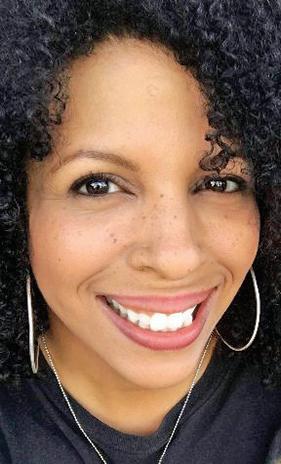
They’re vital beacons of liberation and hope, places where we discover ourselves, gain a greater appreciation for our culture, and learn.
“It’s more costly to deal with a society being uneducated than educated,” says Malik Muhammad, the co-founder and owner of Malik Books in Los Angeles.
“We have to be very selective in what is being educated.” We live in a society where white is ‘beautiful’ and is Back is ‘evil.’ We have to change that narrative. It’s our responsibility to write our history, write our narrative, and to teach and cultivate our youth to love themselves and be true to themselves.”
Indeed, since opening the doors to Malik Books in 1990, Muhammad says he remains dedicated to being a Black bookstore owner despite the challenges because he believes Black people deserve access to “having a knowledge of self.”
In 1968, FBI Director J. Edgar Hoover ordered the FBI to identify and study Black bookstores because he feared their ability to progress the Civil Rights and Black Power movements.
“Determine the identities of the owners; whether it is a front for any group or foreign interest; whether individuals affiliated with the store engage in extremist activities; the number, type, and source of books and material on sale; the store’s financial condition; its clientele; and whether it is used as a headquarters or meeting place,” Hoover demanded.
Blanche Richardson, whose parents Julian and Ray Richardson founded Marcus Books, told PBS Newshour that her mom and dad “would really scour the country looking for books about Black people. At that time, very few Black people were being published. My parents saw the need for Black people to have a source of information about themselves.”
Blanche Richardson, who runs the bookstore now, said the bookstore was “a meeting place for many organizations, but also a place that appreciated you, welcomed you, did not follow you around the store with mirrors on the walls, you know?”
James Baldwin said, “The victim who is able to articulate the situation of the victim has ceased to be a victim: he or she has become a threat.” And as we’ve seen in the response to “The 1619 Project” by journalist Nikole Hannah Jones, white institutions find truth from Black folk to be threatening to the makeshift ‘truths’ they teach and promote.
Over the years, Muhammad has watched thousands of people’s lives change because they discovered an inspiring book in his store. He believes books have the power to influence thought and action, and that being able to read the right books can set you on a path toward fulfillment and success.
“Everyone has a shelf in their mind of the collection of books that they have read,” Muhammad says, “and those books influence your thoughts and the decisions that you’ve made. We like to curate and select books that are positive and uplifting, but in the process, we address real issu
Liz Dwyer is Word In Black managing director

Continued from A1
schools nationwide saw a 7% increase in enrollment from the 2019/2020 school year to 2020/2021. However, the share of Black students enrolled in charters declined from 30% to 25%. Are Black families losing interest in charter schools? The short answer is no, but it’s not that simple.
Where Did the Overall Charter Enrollment Increase Come From?
Most of the increased charter enrollment comes from parents enrolling their children in virtual schools during the pandemic, and a large number of virtual schools are charters. Dr. Jon Valant, a senior fellow at the Brookings Institution, says COVID created a “sudden jolt to the system.”
“A lot of families ended up enrolling, at least for a year or two, in virtual schools, and a disproportionate number of virtual schools are charters,” Valant says, which inflates the enrollment numbers. “A lot of families are not really signing up because they want to send kids to a charter school, necessarily, they want to send kids to a virtual school.”
Thirteen states had virtual charter enrollments increase by more than 10%, a Network for Public Education analysis found. Further, only one of those states saw growth in tra-
Continued from A1 request. It was that question that kicked me into gear.”
Since his mother wouldn’t let him open a luxury car dealership, Joshua pivoted.
“Well then, can I start a luxury car air freshener business?” he rebutted.
“I just couldn’t say ‘no,’” Shay said.
Shay said she knew from birth that her son was gifted.
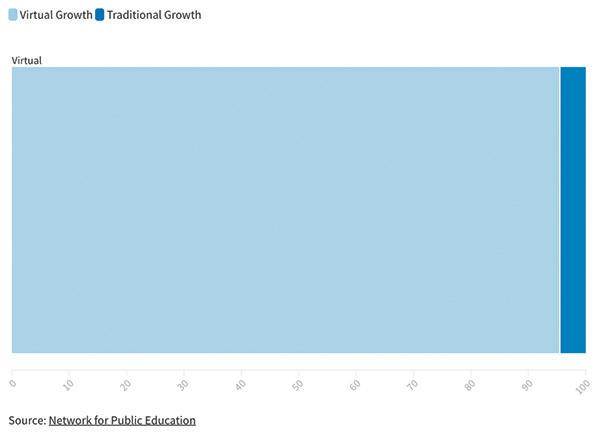
ditional charters exceed growth in virtual charters. Overall, the analysis found that traditional charters accounted for 4.5% of the growth, while virtual charters were 95.5%.
Nearly all of the charter school growth was driven by enrollment in virtual charters.
(See graph 1 above)
So Why Does it Look Like Fewer Black Students Are Attending Charters?
There’s been a huge increase in Hispanic students enrolling in charters, which is shifting Black and white students to be a smaller portion of the whole.
“For a long time, there was an under-representation of Hispanic students in charters, and now we’re starting to see
“He’s always been that curious kid, Joshua always had that entrepreneurial spirit,” Shay explained. “He was always taking things apart or mixing chemicals. When he asked for a chemistry set, I bought one for him. The same when he asked for a microscope. I wanted him to understand what things meant, to get an understanding of formulating and mixing stuff.” Shay said she struck a deal with Joshua. Her son was fascinated with cars, especially sports cars. He had researched


Hispanic students enrolling at rates that are more reflective of their portion of the population as a whole,” says Dr. James Lynn Woodworth, a research fellow at the Hoover Institution.”That’s going to, by definition, cause the percentage of students in charters who are Black to decrease.”
Charter enrollment has been
luxury cars and completed model car kits. So, Shay agreed they’d start at the air freshener point then go to the next phase and the next, until he was old enough to start a car dealership and ultimately become an engineer, designer of sports cars, his other youthful desire.
Together the mother and son researched what chemicals, bottles, and other supplies they’d need to make home and car fresheners. Shay, who calls herself Joshua’s “Mom-ager,” refused to be a parent that runs their child’s business. She
increasing for decades, and it was disproportionately among Black students. This can be attributed to the hyperlocal nature of charter schools, which was appealing to Black and Brown families, says Debbie Veney, senior vice president of communications and marketing for the National Alliance of Public Charter Schools. Black
always insisted that Joshua take the lead on everything from production to promotion to distribution.
“We used to sit down to work on his logo and colors,” Shay remembered. “I’d ask, ‘what do you want your colors to be?’ He’d answer, ‘Mom, I’m a kid. Of course, I want them to be bold and bright.” Shay said his response was similar when they worked on the logo.
“He’d say, ‘Mom, Mr. Fresh is me, so it should look like me.”

were scared,” Veney says. “They did not want their children back in brick and mortar schools just yet.”
These numbers do tell stories, but it’s still too early to note any definitive enrollment trends. In fact, Valant says, we shouldn’t infer anything about charter school demand from enrollment changes in virtual charters over the last couple years.
The Appetite for Charters Probably Isn’t Changing
Even if parents start choosing traditional in-person schools as the country moves forward through the pandemic, charter schools aren’t going anywhere.
and Brown families are most affected by the pandemic, both in terms of mortality rates and economic impacts.
As the percentage of public charter school attendees more than doubled, the enrollment rate of Black students decreased.
(See graph 2 above)
In the first two years of the pandemic, charters also offered flexibility and realtime feedback parents could give, like weekly polling about whether they wanted to send their students to the building or keep them at home. This, in particular, spoke to Black and Brown families, who may live in multi-generational homes.
“While some populations were eager to run back into schools, there were a lot of Black and Brown families that
Sure enough, the duo came up with a colorful, animated drawing of Joshua that’s on the fragrance bottles, banners, promo and business cards and other materials. Joshua was ready to debut his product in 2019. He and his mother hit the event circuit, selling “Mr. Fresh” fragrances at outdoor markets and special events. Shay knew that her young entrepreneur would be the major selling point and she was correct. People were fascinated when they met the young vendor hawking his products. It was difficult at first. Joshua was extremely shy at the time, willing to sit back and let his mother do the talking. Shay wasn’t having it.
“I had to remind him, ‘you said everything is about you. It’s your logo, your label, your T-shirts, your business cards… people are here to see you, not me.”
That’s where Joshua honed the art of shaking hands, telling his story, and interacting with customers. No longer shy, Joshua has spoken before thousands of young people. He served as the grand ambassador for the virtual Annie Malone Parade last year, volunteered for Mayor Tishaura Jones’ mayoral campaign and has appeared on most local television news stations and national outlets such as Good Morning America and Access Hollywood.
“We have seen steady increases in charter school enrollment — that has never wavered,” Woodworth says. “I don’t think we’re going to see a change in that. I think it’s going to continue the trend.
Valant agreed, saying it doesn’t matter to the majority of parents whether their children are attending a charter or traditional public school, just that it’s a good school that works well with their family. He offered one caveat.
“Now that we’re coming out of COVID, everything is a little bit up in the air,” Valant says. “If there’s one change that I would anticipate in enrollment numbers going forward, it’s going to be that we see movement from virtual charters back into brick and mortar schools, whether those are charter or traditional public.”
“I stressed that the pandemic is like a hiccup, a block in the road. We have to overcome this, so what can we do?”
Today Shay and Joshua consider the pandemic a blessing of sorts. It forced them to pivot and figure out a way to extend their product’s reach. With his mother’s help, Joshua researched the retail market and before long found himself the only kid in the room making product pitches to Schnucks and Dierbergs Markets, securing contracts with both stores.
n “Mom inspired me to live out my dreams and motivated me to never give up even in the midst of the pandemic.”
– 13-year-old entrepreneur, Joshua Danrich
Joshua said it was a blast meeting co-host Michael Strahan, but he also remembered how nervous he was during the Good Morning America interview and how, at one point, he paused out of nervousness.
“I just barreled through and, you know what, it built up my confidence,” Joshua said.
The fact that Joshua is so young has been an inspiration for his clients.
“People were just amazed that he was so young cultivating his dream,” Shay said. Joshua said he’s even had adults who told him he has inspired them to quit their jobs and follow their entrepreneurial dreams.
A true entrepreneur must be able to identify needs in the marketplace, take on financial risks and be ready to adapt for any unforeseen occurrence. But how could an entrepreneur who was 11 at the time adapt to a global pandemic?
Both Joshua and his mom Shay used the word “halt”, as in the pandemic halted the business for a brief time. They were used to face-to-face sales, shaking hands and selling at outdoor events. COVID brought all that to a halt. Shay had to don her business consultant’s hat to prepare her son for adversity.
Joshua also developed a line of “Mr. Fresh” safety products that includes hand sanitizers, disposable face masks and ear-savers for masks. During the pandemic he kept his product in the public’s eye by donating them to organizations like Affinia Healthcare, doctors, nurses and other healthcare workers.
At the age of 13, Joshua is a poignant speaker and deliberate thinker. Pedestrian words have multi-layered meanings for the youth. For example, he explained how “Fresh” in his product’s name is an acronym for “Faith to Rescue Every Son from Hurt.” His mission, he said, is “to promote emotional, mental, physical and financial maturity, along with self-confidence in African American boys.” Joshua gives credit for his business success to his mom, who he’s also prescribed an acronym:
“Mom inspired me to live out my dreams and motivated me to never give up even in the midst of the pandemic,” Joshua said, adding: “To her, I will be forever grateful. That’s why I gave her name an acronym, too. She’s my ‘SHAY,’ my strategic help along the years.”
When asked about his future, Joshua’s ambitions rang familiar.
“Well, I’m 18, I want my own luxury car dealership. I want my own Mr. Fresh store and I want to be helping in the community. I’ll always rep St. Louis. No matter where we go, this is who we are.”
Sylvester Brown Jr. is The St. Louis American’s inaugural Deaconess Fellow. For more information about “Mr. Fresh” products visit: https://befreshnow.com/
Continued from A1
‘A signal to my daughters and granddaughters’
Dean told States Newsroom in a brief interview after being detained by police for about an hour that she joined the demonstration to “provide civil disobedience to stand up against unjust laws.”
“I wanted to send a signal to my daughters and granddaughters. I will stand up for their rights,” she said.
Dean said she expected Democrats will keep holding events and debating legislation that protects reproductive rights, including abortion access, though she wasn’t sure if members would hold other demonstrations that could lead to arrest.
“You’ll see us taking legislative action or talking to the media, doing everything we possibly can to say the stripping of rights of half of our citizens, putting us in a second-class position, that will not stand,” Dean said.
Continued from A1
In her new lead role in the Diversity Inclusion Culture Competence and Equity department (DICE), Smith will focus on faculty recruitment, especially towards those who are historically underrepresented. She will spend time looking at the university’s staff and students who are historically marginalized. She also plans to connect with them concerning their personal experience to make sure they feel a sense of belonging on the campus.

abortions.
U.S. Rep. Cori Bush, D-Missouri, following a protest in Washington, D.C. for abortion rights where members of Congress were arrested.
right doesn’t mean Congress can’t make it a statutory right, Levin said.
Votes in House
The U.S. House voted last week to approve legislation that would once again make abortion legal nationwide and a bill that would ensure patients who need to travel out of state for abortions can do so without interference.
Neither measure is expected to make it past the Senate’s 60-vote legislative filibuster.
The House is set to vote later this week on a bill that would ensure access to contraception, amid concerns from activists that the Supreme Court may undo other cases, including the ones that guarantee people the ability to decide how to use contraception.
Bush told reporters while detained by police that she decided to attend the protest to continue the advocacy she’s been part of for years.
“I co-organized and co-led an occupation of Sen. Roy Blunt’s office — and he talks about it — back years ago during the Brett Kavanaugh hearings, because we saw this coming,” Bush said, referring to the Republican senator from Missouri and the Supreme Court justice. “We knew that if he was able to be confirmed, and some other things took place, that this could happen.”
Smith says she will make certain that all voices are heard.
Bush said that as a member of Congress now, she now has a voice and power in a different way and wants to use that to defend reproductive rights, including access to safe
“I have to do everything I can to be able to raise this issue and to make sure people know we will not stop fighting,” Bush said. “And this is not just for us now. This is for our legacy. This is our children’s children.” Levin said while detained and a band played upbeat music in the background that the U.S. Senate needs to eliminate the
60-vote legislative filibuster that’s stopped abortion bills from advancing.
“The filibuster is a vestige of Jim Crow,” he said. “Our founding fathers didn’t want it. It’s just a simple Senate rule that a majority of senators should get rid of.”
Just because the U.S. Supreme Court ruled that abortion isn’t a constitutional
Associate Justice Clarence Thomas wrote in his opinion overturning the constitutional right to abortion that he believes the Supreme Court should revisit the contraception case as well as the case that legalized samesex marriage and the case that barred the government from interfering in consensual adult private sexual relationships.
“I’ll be doing a lot of listening because there are individuals who want to create a sense of acceptance and who want to diversify SLU even more. And I want to listen to their voices,” said Smith.
based approach. She has a track record of making campuses more welcoming for people from backgrounds historically underrepresented in higher education.
Smith earned her Master of Science degree in health behavior research from Washington University School of Medicine, a bachelor’s degree in psychology from Chicago State University, and certification in executive leadership from The Wharton School, University of Pennsylvania. She has devoted much of her career to tackling complex institutional challenges with a data-driven and research-
Smith is the Inaugural Associate Dean of diversity and inclusion and Associate Chief Diversity Officer at the Yale School of Medicine. She co-administers the school’s Biological and Biomedical Science Diversity and Inclusion Collective. The collective is a student-driven program that fosters the intellectual and personal growth of underrepresented minority students.
Smith also co-chairs the Intersections Science Fellows Symposium, an initiative
designed to showcase the outstanding research contributions of postdoctoral students from historically underrepresented backgrounds in the sciences and assist them in securing faculty positions.
“Rochelle Smith is an experienced leader who has designed and implemented innovative initiatives that advance equity in higher education,” said the university president Fred P. Pestello, Ph.D. “I am grateful that she is bringing her expertise to the SLU community, and I look forward to working in partnership with her in the years to come.”
Before Yale, Smith worked at Washington University in St. Louis for 22 years. During
her time at the university, she founded the Diversity Pipeline Consortium for STEM and co-designed two faculty-of-color retention programs, among other accomplishments.
“With her proven record of visionary strategic leadership, success working across boundaries, her breadth of management experience, and demonstrated ability to advance and imbed diversity, inclusion, and equity within an organization, Rochelle exemplifies all of the qualities required for this role and many more,” said SLU Provost Michael Lewis, Ph.D. This legacy is particularly meaningful to Smith, whose late husband, Jonathan C. Smith, Ph.D., was SLU’s first vice president for diversity and community engagement. Her husband was so impactful and beloved by the university and the community, that SLU rededicated its amphitheater in his memory Smith looks forward to reconnecting with local community leaders and getting to know her new professional colleagues who are also involved in furthering diversity, equity and inclusion in St. Louis’ academic ecosystem.
“It is the work of everyone at SLU, [we need] the entire community to help in this work,” said Smith.


Harris-Stowe State University has named Alandrea P. Stewart, Ed.D., vice president and chief of staff, effective July 1.
“Dr. Stewart has been an integral part of my administration during my interim and current presidency,” said Dr. LaTonia Collins Smith, president of Harris-Stowe State University.
“She is an outstanding member of our leadership team, with a great commitment to our work. Her organizational and management skills are her secret sauce to making a difference at Harris-Stowe. I look forward to her continued leadership and contributions as our university navigates this transformative era.”
As chief of staff, Dr. Stewart will be responsible for directing the office of the president’s overall operations, providing vital leadership to high-level initiatives, programs, and activities on behalf of the office of the president, and cultivating relationships with key University stakeholders.
“I am honored and grateful to President Collins Smith for her trust and confidence,” said Stewart. “Harris-Stowe’s leadership, both for our students and for the community, is especially critical at this time. I am excited about the opportunity to contribute to the continued growth, success, and sustainability of this historic institution. I look forward to working with President Collins Smith, and all our stakeholders, to implement her vision to keep the University on its exciting trajectory.” Stewart has spent over a decade working in secondary and

higher education at St. Louis Public Schools and St. Louis Community College. Most recently, she served as vice president of communications and marketing at Harris-Stowe. She has also served the institution as director of student support services, executive director of communications and marketing, and acting vice president for institutional advancement since she joined the university in 2016. She will maintain oversight of the University’s communications and marketing efforts as chief of staff. Stewart earned a bachelor’s degree in communication studies from Jackson State University, a master of arts in sports management from Lindenwood University, a master of education in counseling from the University of Missouri-St. Louis, and a doctorate in higher education leadership from Maryville University.


Nurse For Senate Trudy Busch Valentine has seen firsthand the problems of our healthcare system. As a nurse who’s worked at hospitals, with abused and neglected children, and provided hospice care, Trudy knows how hard it is for families facing high expenses—and with

By Ashley Winters
The St. Louis American
Brian Barlay, a Sierra Leone immigrant moved to Jefferson City when he was just 15 years old, he brought along his dreams and hopes of achieving the American dream. However, they were soon spoiled with his first experience of life in a wealthy capitalist society –homelessness.
“It was tough, my American dream was tarnished,” said Barlay.
Back in Sierra Leone, Heaven was at the top and America was right beneath it. Barlay thought everyone in America was wealthy, his mom told him, “son, welcome to America.”
But Barlay felt everything but welcomed. He says it was pretty difficult to adjust to American culture in Jefferson City at just 15 years old. Mainly because his economic status dramatically changed once his family moved to the Midwest.
“Back in Sierra Leone, my mom could afford everything for us and others too, but in America, my mom worked two or three jobs. I never got to see her. And I had to figure out life on my own, said Barlay. He was warned repeatedly to be conscious of all Americans, he became very shy and nervous not knowing how to navigate in a society that he was told to be afraid of.
Barlay says at one point he became a prisoner of his mind.
“I wondered when do I become the captain of my own ship,” said Barlay.
Over time Barlay decided he wasn’t going to hold back anymore, he wanted people in the United States to know the real him. Someone smart, funny, and talented.
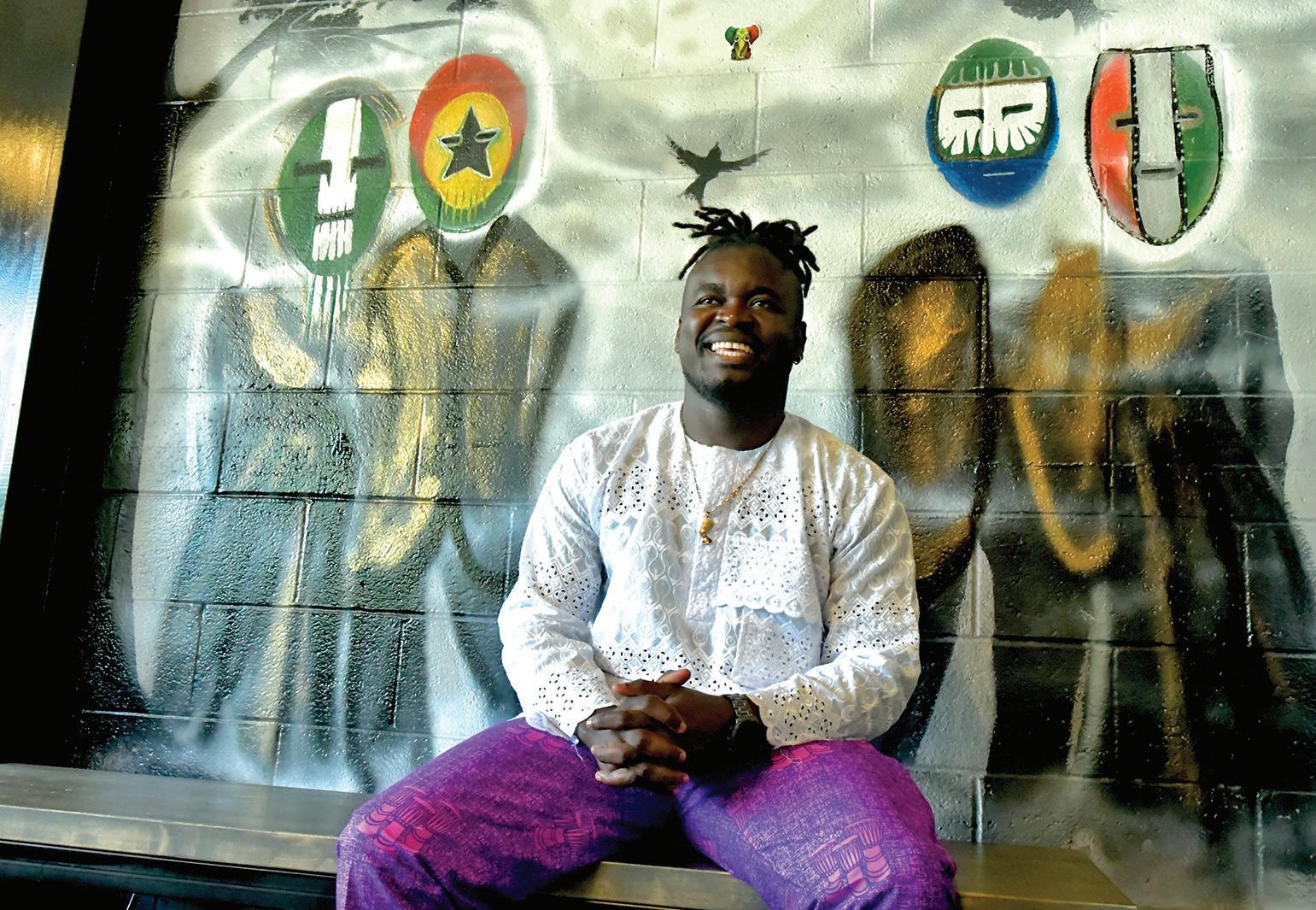
He started taking theater classes and through that experience, he understood American culture from various lenses which artistic expression provided.
Barlay got to thinking if he had someone to help him adjust to life in a new country or city he would have had an easier
time assimilating. He wouldn’t have experienced being homesick so much or being afraid to build relationships in social settings. And so Barlay Consulting was born in March of this year. He took a leap of faith and quit his full-time job at Klem Academy. He put all his focus into helping young immigrants
get to know St. Louis on a more personal level.
“There is a need for this, especially for young immigrants,” said Barlay.
Barlay says he is an acculturation coach, through his business he plans to help young newcomers to the St. Louis region create a balance learning
to assimilate to survive, but not losing their identity. He will teach them how to maximize their time here in the Lou, by understanding the culture of St. Louis, and showing them the nuances that make us, us. He will also coach them on how to incorporate their skills and talents in professional and
n “We need to bridge that gap, I think about, who can I connect with, how can I bring both communities together.”
- Brian Barlay
personal settings while building relationships, creating a friend/ family circle in a new place.
Barlay offers monthly networking events, bringing in young adult immigrants from all over to connect, build, and create their community.
According to the Boundless data report, there is close to a 5 million Black immigrant population in the United States. 63% of Black African immigrants arrived in this country in 2000 or later. The report also shows the majority emigrated from Latin America and the Caribbean, 54% of Black immigrants came to the U.S. from Latin America, and around 42% came from Africa.
“There are deep biases and racism when it comes to Black immigrants, and people tend to think Black immigrants don’t exist in St. Louis. The focus is on the Spanish and Asian communities,” said Barlay. He plans to connect with local universities, including, St. Louis University, Webster University, Washington University, and UMSL. He says connecting with the Black community is important because we all share African heritage.
“ We need to bridge that gap, I think about, who can I connect with, how can I bring both communities together,” said Barlay.


The St. Louis Board of Aldermen went on summer break on Friday, but not before two landmark bills were passed: Board Bill 47, which gave “teeth” to the Civilian Oversight Board watchdog group that monitors the police and corrections departments, and Board Bill 61, which established the Reproductive Equity Fund. Both bills passed on the last day before break. The EYE finds it worth noting that neither of the bills would have passed under former Board President Lewis Reed But we would be remiss if we did not acknowledge apparent the continuing influence of Reed on his former colleagues who remainnamely, the “Ladies for Lewis” caucus comprised of Ald. Marlene Davis (Ward 19), Pamela Boyd (Ward 27), and Lisa Middlebrook (Ward 3). In the past, this trio of North City alderwomen were reliable votes for Reed and rarely did they vote against him. Now, more than a month after Reed’s last appearance as aldermanic board president, the “Ladies for Lewis” continue to vote on bills as if he was still there.
This week, we are analyzing the curious pattern of sponsoring a piece of legislation and then either voting against it or voting “present.” An alderman typically will vote “present” if they have a conflict of interest, or there is some other compelling reason to vote for or against a bill. Rarely does an alderman vote “present” on a bill they sponsor. But on this last day of session, that happened twice.
Ald. Shameem Clark Hubbard (Ward 26) sponsored the Civilian Oversight reform bill that not only adds power, funding, and staffing to the current oversight boards, but further establishes the Division of Civilian Oversight within the Department of Public Safety and creates the Public Integrity Unit under the prosecuting attorney’s office to review wrongful convictions obtained under current and previous administrations. Board Bill 47 is a major step forward for our City and it was strongly opposed by the St. Louis Police Officers Association.
Hubbard’s bill was co-sponsored by Davis and Boyd, along with nine other aldermen. But when the final vote was taken, Davis voted “present” and Boyd abstained from voting.

Board Bill 47 passed with just enough “aye” votes to pass, no thanks to two of its co-sponsors.
The EYE wants to remind everyone that a well-supported, funded Civilian Oversight Board would have never passed under President Reed’s leadership.
Ald. Annie Rice (Ward 8) sponsored Board Bill 61, which establishes the Reproductive Equity Fund for pregnant St. Louisans seeking abortions across state lines with transportation assistance, child care, and other logistical support. The bill further allocates funding to expand access to doulas, lactation support, and other vital reproductive healthcare services. During the June 28 committee meeting to vote on the bill, Ald. Middlebrook voted in favor of Board Bill 61, passing the bill out of committee and sending it to the full Board of Aldermen for a final vote.
However, when the time came for Ald. Middlebrook to take a stand against a repressive, abusive state government policy, she voted against Board Bill 61. Middlebrook wasn’t a sponsor of Board Bill 61, but her shift from supporting the Reproductive Equity Fund in committee to later voting against it should not go unnoticed.
Since Reed’s departure from the Board of Aldermen, the “Ladies for Lewis” caucus seem to have lost direction and leadership, co-sponsoring board bills, and them voting against them at the next. Co-sponsoring a bill is an implicit acknowledgment that a legislator supports and does not have any conflicts

with or reservations about the language included in that bill. To later vote against that same bill without removing that co-sponsorship is confusing, and raises questions.
It is at best a political play meant to generate support as next year’s aldermanic elections loom; at worst, it is a false promise to colleagues and voters who depend on their perceived support to advance legislation.
• • •
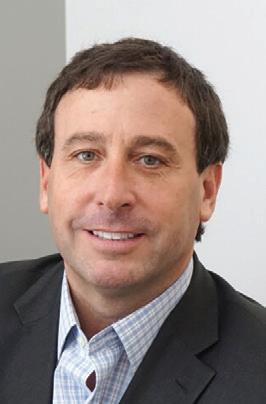
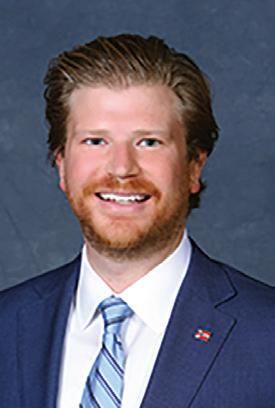
Sticking to the theme of inexplicable aldermanic behaviors, Ald. Jack Coatar (Ward 7) - recently-announced candidate for President of Board of Aldermen - continues to add to his lengthy history of sponsoring and/or voting on legislation that directly benefits his campaign donors. A few weeks ago, Coatar called public attention to himself after his refusal to recuse himself - or, choosing not to participate when his financial supporters stand to benefitfrom a vote to issue a demolition permit filed by Lux Living. . Frankly, the EYE finds votes like Coatar’s - cast for the financial benefit of a political donor - to be akin to the the pay-to-play scheme that led to indictments due to federal corruption charges and forced the resignations of Board President Lewis Reed and Aldermen Jeffrey Boyd and John Collins-Muhammad Considering how close Reed and Coatar were during their
shared time at the Board of Aldermen, those who care about government transparency and should pay close attention in the weeks leading up to the August aldermanic president primary. Next week, though, the Preservation Board will meet again and another campaign contributor to CoatarOcean City One, LLC, merely a shell corporation of Lux Living seeking yet another review of its plans to construct a multi-story apartment building at the site of the Engineers Club Building on Lindell Avenue. Destruction of this historic property previously was pitched by Lux Living in December, but the Preservation Board voted 4 - 1 to deny a demolition permit.
Coatar, a recipient of thousands of campaign dollars from Lux Living, was the sole vote in December in favor of issuing the demolition permit. Although Coatar did not have the legal obligation to recuse himself at the time, he arguably did have an ethical responsibility to his constituents and the residents of the 18th Ward, where the Engineers Club Building is located.
Now, Coatar has a legal responsibility to disclose the conflict of interest and to recuse himself from voting on something beneficial to his financial benefactors under Proposition R. Despite using “Ocean City One, LLC” in its filings with the City, Lux Living has yet to file the necessary paperwork with the
Secretary of State required to, for example, legally own property. Regardless of what Lux Living wants to call itself, conflict-of-interest disclosure and recusal are nevertheless required of Coatar.
But if Coatar has been trying to find a way to distance himself from his close ties to Reed, his political operation, and the Reed conduct of governance, the ambitious young alderman is not doing a very good job of it.
Since Coatar’s first run for office in 2015, he has employed the exact same political consulting firm as Reed: the Kelley Group, along with its subsidiary Show Me Victories. This is the same entity that helped gain public office for former St. Louis County executive and Steve Stenger’s subsequent wins, as well as the now-indicted former board president Reed and Spy Plane enthusiast Alderman Tom Oldenburg (Ward 16).
While we do not believe that a person’s association with someone who has a criminal conviction is necessarily bad, we cannot ignore a close political relationship with other elected officials who have directly participated in, been charged with, and/or been convicted of criminal behavior.
In an important development in the last few weeks, Coatar’s political action committee, “Jack PAC,” filed paperwork with the Missouri Ethics Commission to advise that Terence Niehoff, the criminal defense lawyer representing former alderman Jeffrey Boyd, began serving as his campaign finance treasurer on July 6.
A quick review of Coatar’s recent quarterly campaign finance disclosure reveals significant sums coming from Lewis Reed’s past financial supporters, including a $2,600 donation from the local
Carpenters Union (currently embroiled in its own scandal and alleged wave of federal white collar crimes), $2,600 from former mayor Lyda Krewson, and $2,600 from Lou Hamilton. Political insiders know how close Reed was to the Carpenters Union before their respective falls-fromgrace. Since Krewson and Hamilton have long supported and funded the political status quo for decades; their support is unsurprising.
Some other red flags and perhaps indicators of upcoming development projects: tandem donations $2,600 contributions from Beulah Properties, LLC, and its founder, Mayokun Aiyelokun. Although “Beulah Properties” is misspelled in this most recent disclosure report, the donations follow a pattern of donations from developers throughout Coatar’s seven years in office, including a maxed-out $2,600 donation by Aiyelokun in 2020; $2,600 from 900 N Tucker Building LLC (recipient of a nearly $12 million tax increment financing deal) in March; and $5,200 in June from Jeff and Anna Tegethoff of Tegethoff Development, another multimillion developer from West County. Dozens of developers have poured tens of thousands of dollars into Coatar’s war chest over the years, and he has paid them back with political favors and sweetheart development deals to the detriment of financing for St. Louis Public Schools.
The question we asked last week remains unanswered: who does Jack Coatar really serve? Looking at his financial disclosure statements, it’s becoming more and more clear that Coatar’s priorities are aligned primarily with those of his political donors rather than the public good.
Please join us for a virtual event!
Number of people diagnosed with Alzheimer’s:
50 million worldwide.
6 million in the United States.
120,000 in Missouri.
Alzheimer’s is a global health problem. Tremendous gains in understanding the underlying science and basic biology of the disease and other dementias are being made every day. Join us on Zoom with the Alzheimer’s Association, Greater Missouri Chapter to learn about the great strides in strategies for prevention, detection, testing, and treatments of Alzheimer’s and other forms of dementia.
AARP MO Brain Matters: Alzheimer’s Association Research & Treatment Advances Wednesday, August 10 | 10 a.m.
For more information or to register, visit aarp.org/stlouis.
In Your Community /aarpmissouri @aarpmissouri



The bulk of the funds provided in the gun reform law known as the Bipartisan Safer Communities Act are for expanding mental health services. Will it help improve mental health outcomes and stem violence?
By Victoria Knight Kaiser Health News

The gun safety law forged through tense bipartisan talks in the Senate last month has been heralded as the first federal legislation in 30 years to combat rising gun violence. But what often falls below the radar is the new law’s focus on improving mental health services. News coverage has largely centered on the law’s provisions to enhance background checks for younger buyers, encourage states to implement their own “red flag laws,” and close the “boyfriend loophole.” Less attention has been paid to the mental health programs that most of the estimated $13 billion is earmarked for.
“It is kind of a gun safety bill wrapped in a mental health bill,” said Jeffrey Swanson, a psychiatry professor at the Duke University School of Medicine who studies the intersection of gun violence and mental illness.
The pairing of these initiatives in the legislation spearheaded by a small group of
n “We don’t think you can solve America’s gun violence epidemic through the prism of mental health. But if we have agreement between Democrats and Republicans to spend billions of additional dollars on mental health treatment, especially for vulnerable communities, let’s take that opportunity.”
– Sen. Chris Murphy (D-Conn.)
senators after the May 24 school shooting in Uvalde, Texas, was a result of Republicans’ insistence that any gun reform effort must also address mental health, even as Democrats disavowed a connection between the two concerns.
“We don’t think you can solve America’s gun violence epidemic through the prism
of mental health. But if we have agreement between Democrats and Republicans to spend billions of additional dollars on mental health treatment, especially for vulnerable communities, let’s take that opportunity,” said Sen. Chris Murphy (D-Conn.), a key negotiator, while laying out the bill’s framework at a June 13 press conference.
While mental health advocates are happy Congress is authorizing new funds for their cause, they also expressed concern it would continue to perpetuate the idea that people with mental health disorders are largely responsible for gun violence, although research shows that’s not the case. Only 3% to 5% of violent acts are committed by individuals with a serious mental illness, such as schizophrenia, bipolar disorder, or major depression. People living with mental illness are more likely to be victims of violence than are members of the general population.
“It is with very mixed emotions when we think about lumping these together,” said Hannah Wesolowski, chief advocacy officer at the National Alliance on Mental Illness. “We need mental health investments, yet we
By Sylvester Brown Jr.
The St. Louis American
“If COVID-19 were a person, how would you describe its characteristics?”
It was an unusual question, perhaps, but Dr. Mati Hlatshwayo Davis (pronounced “Shla-chwhy-o”), director of the St. Louis Department of Health, answered with little hesitation:

“Oh my God, it would be one of the most intentional, focused, and stubborn people that you can ever meet,” Hlatshwayo Davis answered, adding, “COVID knows who he or she is, what it has the capacity to do, and it hasn’t grown tired. It’s constantly reinventing itself.”
The “reinventing” part of Hlatshwayo Davis’ description pertains to new variants. The latest, BA.5, has become the dominant strain, making up more than 65% of all COVID-19 cases in the United States. In the St. Louis region, according to Hlatshwayo Davis, BA.5 has outmuscled previous strains and now makes up approximately 56% of all new cases.
n “We are currently in a surge. If you’re looking at overall volume or impact from other surges, we have surpassed the Delta wave of last summer.”
– Dr. Mati Hlatshwayo Davis, director of the St. Louis Department of Health
“We are currently in a surge,” Hlatshwayo Davis warned. “If you’re looking at overall volume, we have surpassed the Delta wave of last summer. It’s not really a fair comparison though because there are different numbers, different metrics, and different variants. But overall, we’ve surpassed last summer. And this new variant is predominant in the St. Louis region.”
This week, the World Health Organization (WHO) announced that coronavirus cases have tripled across Europe in the past six weeks,
By Alexa Spencer
The National Suicide Prevention Lifeline will change its phone number to a three-digit dialing code, 988, on July 16. People experiencing mental or emotional distress, a suicidal crisis, or substance abuse, can call or text 988 to be connected to a trained counselor. The counselor, a part of the National Suicide Prevention Lifeline network, will “listen, understand how their problems are affecting them, provide support, and connect them to resources if necessary,” according to 988lifeline.org

People in need of support can also chat with a counselor on the 988 website.
The current Lifeline number, 1-800-273-8255, will remain active after the national launch and route calls to 988; which is available 24 hours a day, seven days a week.
“Hope has a new number and it is 9-8-8. This historic transition to 988 Suicide and Crisis Lifeline will promote help seeking and increase awareness and accessibility to this life-saving resource. The 988 Lifeline is a vital mental health safety net for all in this country,” Kimberly Wiliams, president and CEO of Vibrant Emotional Health, which runs the Lifeline, said in a statement. The 988 Lifeline is a national network of more than 200 locally operated and funded crisis centers throughout the U.S.
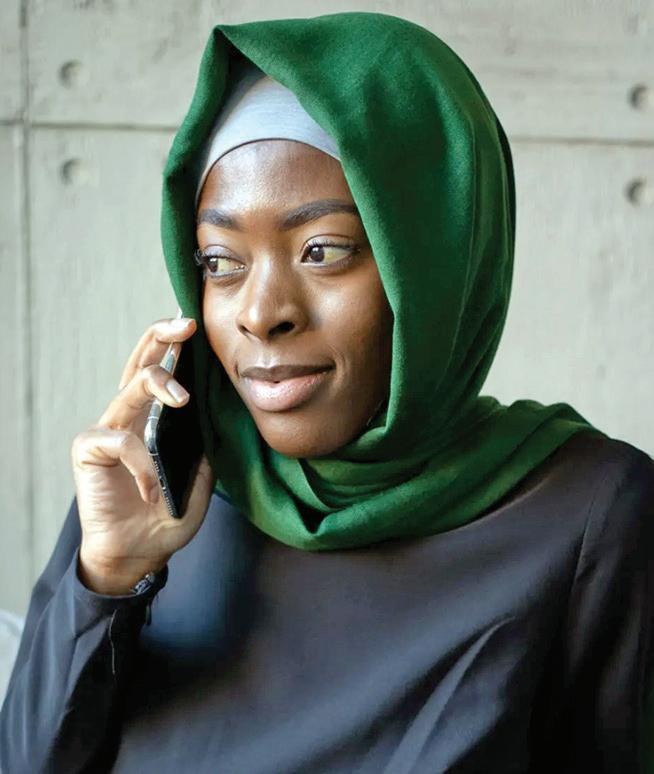
As of Saturday, July 16, the national suicide lifeline phone number will be a three-digit code, 988.


“Taking Care of You”
By Jnathan The Michigan Chronicle
As COVID variants and monkeypox continue spreading, viruses seem to be plaguing us.
However, other viruses require our attention, too. The World Hepatitis Alliance has designated July 28 as World Hepatitis Day to heighten awareness of the five main hepatitis virus types and how to guard against infection.
Hepatitis is a liver inflammation usually caused by a viral infection. The types are A, B, C, D, E, and G. The seriousness of each type varies. Hepatitis A causes people to be sick for a few weeks up to a few months, and most people who contract hepatitis A recover. But hepatitis B and C are far more serious, and the D, E, and G types are rare in the United States.
The Centers for Disease Control and Prevention recommends that children between 12 months and 23 months old get a hepatitis A vaccine, along with infants from six months to 11 months old traveling internationally.
Continued from A12
know that mental health is not the direct cause of a person being violent.”
A central question about this heightened level of investment is whether it can make a difference in the nation’s struggle to combat gun violence. Here’s a look at key mental health aspects in the new law.
What’s in the Legislation
The Congressional Budget Office estimated the new law’s total cost at $13 billion, a large chunk of which will be used to increase funding to expand existing mental health and school safety services programs, including $1 billion over five years for two programs to boost the number of mental health counselors in schools.
Other allocations include:
• $80 million over four years for a pediatric mental health care access program, which allows pediatricians to provide mental health services via telehealth. An additional
Continued from A12
accounting for nearly half of all infections globally.
Hlatshwayo Davis compares COVID-19 stubborn mutations as a form of evolution.
“We know that this (BA.5) is one of the most transmissible variants that we’ve dealt with to date. We can expect that. These variants have that characteristic. They become dominant because they have conferred a chain of mutation that gives them superiority over prior variants…that’s Darwinism, right?”
Although there’s little evidence that BA.5 causes more serious illness or is more deadly than previous variants, it appears vaccines and previous infections do not offer as much protection against it as past variants.
Hlatshwayo Davis urges those who may have taken a
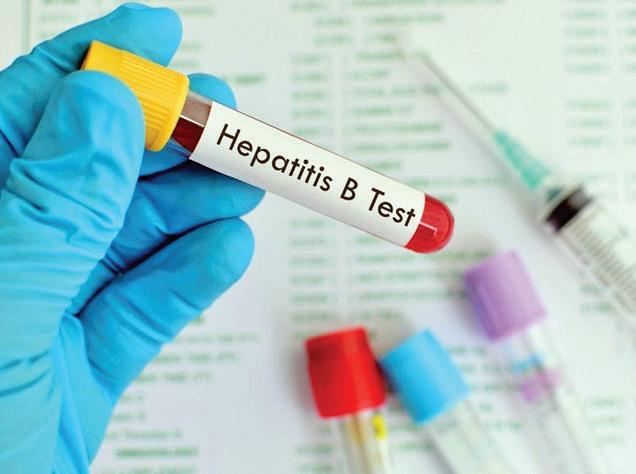
The CDC encourages everyone from newborns to age 60 to get the hepatitis B vaccination. Is there a cure for hepatitis
$60 million over four years is directed toward training primary care clinicians to provide mental health services to young people.
• $250 million over four years to increase the Community Mental Health Services block grants to states to help fill in blanks in a state’s mental health system, such as creating care programs for adults and children with serious mental illnesses or emotional disturbances.
• $240 million over four years would be added to Project AWARE, which provides grants to mental and behavioral health organizations, community groups, and schools to raise students’ awareness of and connect them to mental health services in schools.
• $150 million this year for the new 988 National Suicide Prevention Lifeline, which launches in mid-July. The new law also provides up to $8.6 billion in funding over 10 years to support the build-out of certified community behavioral health clinics in every state in the U.S. These types of clinics, which already exist in 10 states as part of a pilot Medicaid program, are
more relaxed attitude about the dangers of COVID due to lower mortality rates to think outside themselves.
“I think we have to shift the way we think about this, to thinking about protecting other members of society. People who are high-risk are more likely to get infected. We cannot, as a society, turn our backs on the elderly, the immunocompromised and Black and brown communities who are disproportionately impacted.”
Hlatshwayo Davis cited another reason people who have been lulled into a false sense of complacency about COVID need to recognize:
“People aren’t focusing on long COVID’s impact,” she said. “Even if you aren’t hospitalized there are people who have been on oxygen for over a year who can’t walk a block even though they used to run miles. We still don’t know how COVID impacted their bodies in the long term.
While hepatitis B cannot be cured, newer, less toxic drug therapies have effectively slowed the disease progression
required to see people regardless of their insurance coverage and treat them for mental health or substance use issues. States would need to apply to participate in the program, which would begin in 2024.
While annual reports submitted to Congress about the pilot program show behavioral health outcomes varied by state, other data shows the clinics have saved money and scored well on such measures as getting patients to adhere to antidepressant medication or engage in alcohol-dependence treatment.
in chronically infected people. Even those with advanced liver disease have more prolonged survival and better quality of life because of newer drug
Center for Health Information and Research at Arizona State University, because not all the programs getting additional funding have been evaluated for effectiveness or are able to be evaluated.
n Only 3% to 5% of violent acts are committed by individuals with a serious mental illness, such as schizophrenia, bipolar disorder, or major depression.
However, a 2021 Government Accountability Office report found that the data on these clinics was incomplete, leading to difficulty in evaluating their effectiveness in improving behavioral health.
It’s hard to know how effective the new spending will be at improving mental health, said Marisa Domino, an economist and the director of the
“While you may say something is ‘mild’ you don’t know what kind of inflammatory response is happening on the inside. For example, some people may have had a minor inflammation around the heart (Myocarditis). While that may be a short-term thing, we don’t know what impact that may have on the heart longterm and that’s not something I’d ever gamble with.”
The new variants are also challenging prevailing theories. Many believe if they were previously infected with the virus, they are now immune. But researchers are alarmed by the growing number of Americans who seem to be contracting the virus more than once. As of early July, there have been more than 1.6 million reinfections across 24 states. Experts warn that the numbers are likely much higher because many people are testing at home and not reporting their diagnoses.
Although COVID infec-
“There are lots of little opportunities in this bill, but it’s hard to tell as a whole” if it will be useful at improving mental health, said Domino. Some of the funding will begin this year and continue for four or five years. Other spending streams may not start until 2024. That’s typical since government funding must be planned years in advance. But it raises questions about how quickly mental health programs can be beefed up.
Still, advocates and researchers emphasized that more money going toward mental health will likely be beneficial since programs are severely underfunded across the U.S.
tions and reinfections are on the rise nationwide, Hlatshwayo Davis grapples with high concern mixed with reassuring facts.
“What concerns me about the true impact in the city is how it impacts hospitalizations,” Hlatshwayo Davis explained. The Omicron surge in December was bad because hospitals were at capacity, we were running out of healthcare workers to take care of people. It was not only highly transmissible, but it also spread very fast and put a lot of people on ventilators and overwhelmed hospitals. Although we have seen an uptick in hospital cases, we haven’t reached that level of overwhelming capacity and that is somewhat reassuring.”
Like the Harry Potter book and movie franchises, COVID keeps churning out mind-numbing soul-sapping sequels to its original rendition that seem more and more convoluted. Studies suggest
therapies.
Chronic hepatitis B infection affects at least 250 million people worldwide and leads to more than 880,000 deaths annually. It also is the primary cause of liver cancer, the second leading cause of cancer-related deaths in the United States.
Unlike hepatitis C, hepatitis B can be prevented with vaccines. If you are accidentally exposed to the virus, there also are drug therapies you can take—called postexposure prophylaxis—to avert the infection.
How does hepatitis B spread?
The hepatitis B virus is found mainly in the blood but can appear in semen and vaginal secretions.
The virus is transmitted when body fluids from someone with hepatitis B enter the body of someone without hepatitis B.
Transmission can occur when sharing needles or syringes, engaging in vaginal or anal sex, or during childbirth, when the virus can be passed from mother to baby.
It depends on how you define gun violence, said Swanson.
Over half of gun deaths in the U.S. are suicides, and it’s possible this legislation will help to reduce those deaths.
The new law also provides funding for states, which can be used to implement red flag laws, which have been shown to reduce suicide rates. These types of laws, now on the books in 19 states and the District of Columbia, allow for family members, police, or doctors to petition a court to ask to temporarily remove guns for up to a year from people who they fear may be at risk of harming themselves or others.
For example, Swanson led a research project analyzing how a red-flag policy worked in Connecticut, where his team estimated that for every 10 to 20 guns removed, one suicide was prevented.
But experts acknowledge that the mental health spending may not do as much to stop the gun violence that’s manifested through
that vaccines to previous versions may not offer much protection against the latest form, BA.5. So, even though, according to Hlatshwayo Davis, 73.8% of adult city residents are partially vaccinated and 59.8% are fully vaccinated, that doesn’t mean they’re fully protected.
“Vaccines have some efficacy,” Hlatshwayo Davis said, “but there isn’t a vaccine that specifically targets BA.5 at this time. some of the leading pharmaceutical companies are working to come up with boosters and vaccines that will cover more of these variants.”
Since hepatitis B and HIV are primarily transmitted through sexual contact and injection-drug use, many adults at risk for HIV infection are also at risk for hepatitis B.
The CDC says that a new concern now includes the number of American children affected by acute hepatitis for no known cause. The CDC encourages parents and caregivers to be aware of hepatitis symptoms — particularly jaundice, a yellowing of the skin or eyes — and to contact their child’s health care provider with concerns.
What are the symptoms?
Many people with hepatitis have no symptoms, and symptoms of acute infection can appear anytime from two weeks to six months after exposure. But signs of chronic viral hepatitis can take decades to develop. Symptoms of hepatitis can include fever, fatigue, nausea, jaundice, joint pain, loss of appetite, abdominal pain, dark urine, and light-colored stools. This post was originally published in Michigan Chronicle.
mass shootings, such as in Uvalde, at a supermarket in Buffalo, New York, in May, and during a Fourth of July parade in Highland Park, Illinois.
“The vast majority of people with mental illness are not violent,” said Swanson.
This story was produced by KHN (Kaiser Health News), a national newsroom that produces in-depth journalism about health issues. Together with Policy Analysis and Polling, KHN is one of the three major operating programs at KFF (Kaiser Family Foundation). KFF is an endowed nonprofit organization providing information on health issues to the nation.KHN (Kaiser Health News) is a national newsroom that produces in-depth journalism about health issues. Together with Policy Analysis and Polling, KHN is one of the three major operating programs at KFF (Kaiser Family Foundation). KFF is an endowed nonprofit organization providing information on health issues to the nation.
“I have the best boss ever,” Hlatshwayo Davis stressed.
“The way she interacts with the people she’s hired…she takes time, she checks in with us. She supports me even when she doesn’t always agree with what I’m doing. You don’t always see that in city government.”
Yes, COVID is on the rise again in St. Louis and the country, but Hlatshwayo Davis said it hasn’t dampened her resolve to address the pandemic:
“I took this job to do the job.”
Sylvester Brown Jr. is The St. Louis American’s inaugural Deaconess Fellow.
The virus with its “intentional, focused, and stubborn” characteristics has been a constant in Hlatshwayo Davis’ personal and professional life since her appointment as the city’s health director last year. Yet with all its tenacious mutations and the incessant politicization of the pandemic, the infectious disease physician has found upsides in her career. She credits her husband, pediatrician, Dr. Jesse Davis, who she said, “believes in me and this position and is, in every sense, ‘a partner’.” She also gave a shout out to Mayor Tishaura Jones who appointed her to head the city’s health department.

By Burk Krohe UMSL Daily
Quentin Alimayu paced a classroom in Clark Hall at the University of Missouri–St. Louis in bouts of excitement.
He eagerly explained the role music plays in social change and social justice to a group of 11 high school students from across the St. Louis region.
“Music can be powerful,” said Alimayu, a middle school history teacher in the Ladue School District. “It can be joyful, but sometimes music can teach you about cultural identity. It can relate to historical and contemporary events, and that is power – power between music and life in general.”
Indeed, the far-ranging discussion touched on topics such as The Chicks’ – formerly The Dixie Chicks – opposition to the Iraq War, differences in lived experiences, the origins of protest music, policing in the U.S. and even Nat Turner’s Rebellion.
Alimayu ended his lively presentation with a project for the students. They were tasked with thinking about music as action and had a choice of three projects for the day: take a contemporary song and rewrite the lyrics to address a current issue, analyze a socially conscious song from a previous decade or write an original song to address an issue important to the student.
The session was part of the OneCity Stories program sponsored by the Gateway Writing Project at UMSL. OneCity Stories brings together St. Louis-area high schoolers from across the socioeconomic and geographic spectrum to hone their writing and multimedia skills and is aimed at breaking down divisions in the city.
“If we can get people in a
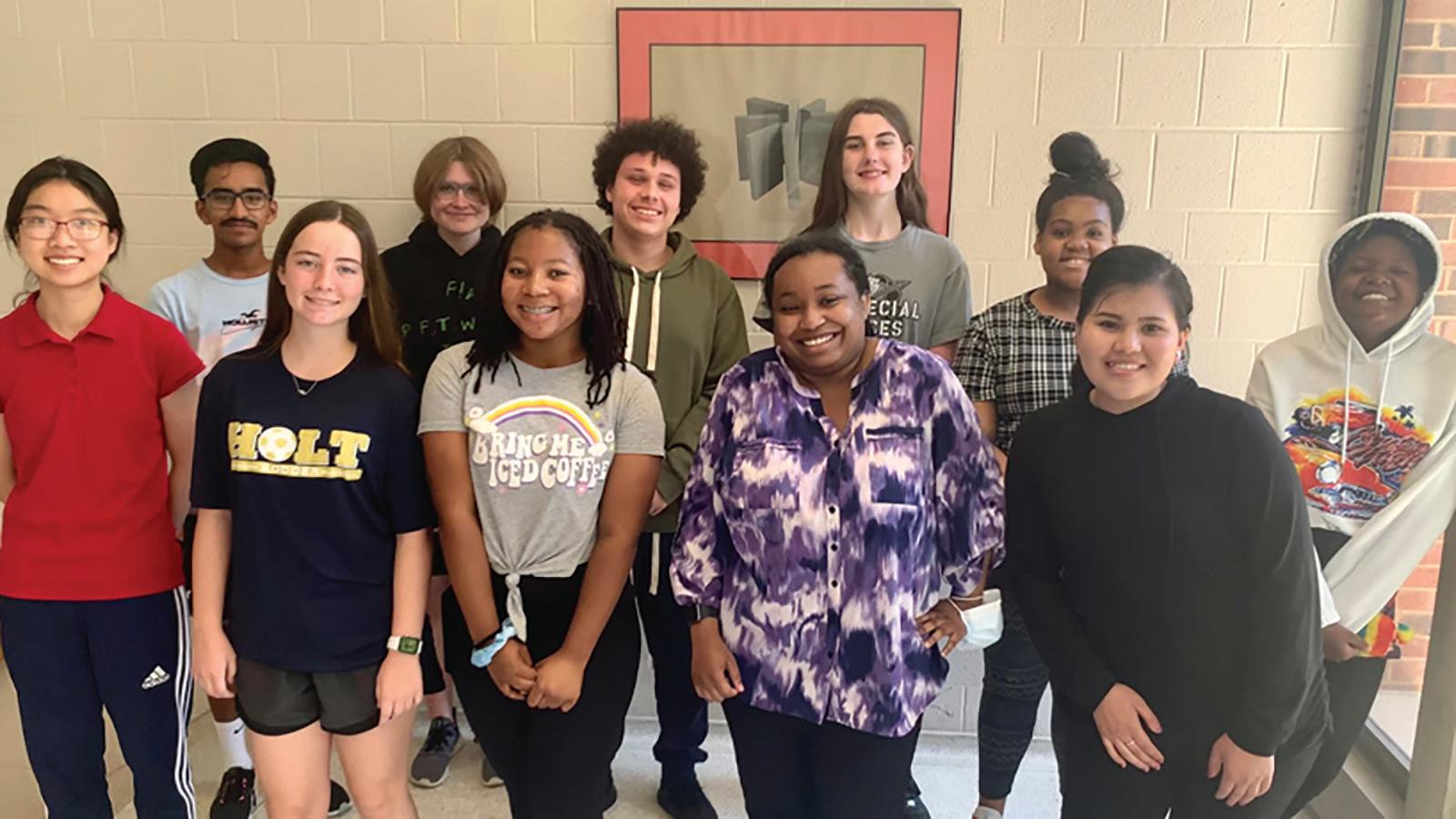
room together that have very different experiences, the barriers that society constructs for us – the physical barriers we have – we can eliminate some of those and form a supportive community for the kids to write and learn about each other,”
OneCity Stories Director Diana Hammond said. The three-week program provides tutelage in disciplines such as fiction, lyric, opinion and poetry writing; filmmaking; podcasting; and storytelling. The participating students were selected through an application process that included writing samples.
In previous years, each week of the program explored a specific medium of journalistic storytelling. However, after returning from a two-year hiatus due to the COVID-19
pandemic, Hammond decided to shift the program toward a looser structure more aligned with the students’ interests.
“What we were seeing the kids really wanted out of the program was not necessarily those expressly journalistic skills so much as space and opportunity to write different genres,” she explained. “This year, we designed it by talking about words first, then thinking about adding images to those words and then building in sound. You could really take one piece, and it could look different in many forms, become different things. But that all is rooted in the writing first.”
She added that this year’s program employs an activist lens with the intent to show students their voices can lead to change.
From June 13 to July 1, Alimayu, Hammond and program leaders Cathy Griner and Randy Meyer guided students through mediums including activist poetry, editorial cartoons, infographics, placebased writing, podcasts, protest music, scripts, slam poetry, snapshot biographies, speculative fiction and vision boards.
Hammond said the idea was to give students many entry points to stimulate their creativity, with the goal of producing three pieces of refined work by the end of the program. The students shared their final products via a digital portfolio.
Throughout the three weeks, a variety of special guests spoke with the students, too. The team worked to assemble a “round table” of people using their voice to effect
change. That group included changemakers such as Khalea Edwards, an activist and political consultant, who helped found Occupy City Hall STL, advocated for the unhoused and protested Line 3 in Minnesota.
“We had a couple of people who have run for political office,” Griner said. “Then we also had a priest who broke away from the Catholic Church.”
The students also went on a field trip to the Missouri History Museum in Forest Park to visit the St. Louis Sound exhibit.
Taariq Ahmed, a rising sophomore at Ladue Horton Watkins High School, said being part of a community of enthusiastic writers improved his writing greatly over the course of three weeks. At
OneCity Stories brings together St. Louis-area high schoolers from across the socioeconomic and geographic spectrum to hone their writing and multimedia skills and is aimed at breaking down divisions in the city.
Ladue, Ahmed enjoys writing for his English and journalism classes, and he contributes to a political blog outside of school.
However, OneCity Stories exposed him to new forms or writing and broadened his perspective on many issues.
“I think my experience has been really, really good,” he said. “I think I’ve learned to think differently and to see what it’s like for people who don’t live in areas like I do. I’ve met a lot of people from different backgrounds in different areas of St. Louis. It’s really been eye-opening. Mr. A got us to think about social justice in a different way than I’m used to. So, he’s exposed me to a lot of different genres and mediums to express how I feel.”
Hammond said it was a joy to watch the high schoolers return to UMSL and bond with each other.
“The older kids in high school had a really hard time during the pandemic,” she said. “I think that some of them forgot how much they valued and enjoyed being in physical company with each other. I think kids have forgotten the value of coming out in the world. So, it’s just been really nice to see them warm up to each other.”






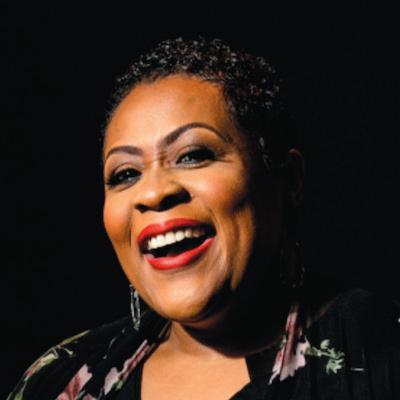


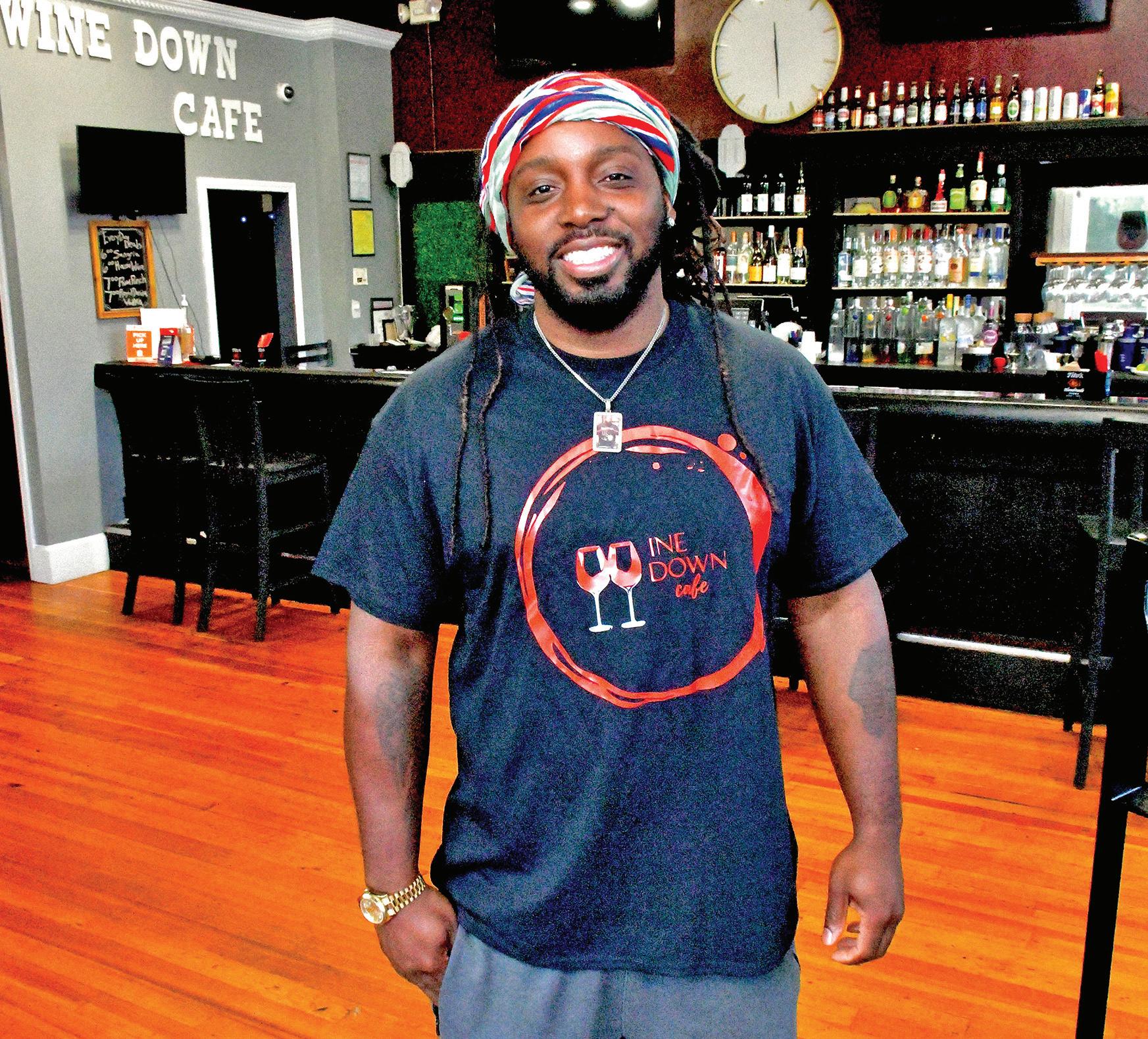
By Ashley Winters
The St. Louis American
Wine Down Cafe is now part of the Carondelet neighborhood in south St. Louis and owner Kevin Shed has brought swanky flair to the corner of Michigan and Ivory.
“This is a new energy for Carondelet, this area is not known for what I’m bringing,” he said.
Its location is convenient for those who live close by but not too far from those who have to travel a little further. The restaurant offers an exclusive wine list and adds a certain type of sophistication to small plates, according to Shed. Mac & Cheese Lollipops made their debut when Wine Down opened in the spring, and Shed said they were an instant customer favorite.
n “This is a new energy for Carondelet, this area is not known for what I’m bringing.” – Wine Down Cafe owner Kevin Shed
Think of a cake lollipop, but instead of cake batter, it’s made with elbow macaroni noodles rolled into a ball and deep-fried to a golden brown. It is paired with a sweet and spicy sauce.
“I like things with a twist”, said Shed, who is also the chef.
And there is a twist in his journey to being a restaurant owner. Cooking and serving custom-
2022.
ers were not a passion for Shed until he moved to New York at 19 to pursue his music career as a rapper.
During the day he worked at a variety of restaurants in New York for six years, including Bad Burger, and Tore Winery. Shed worked in the historic Meatpacking District, and to pay the rent and keep himself afloat in the ‘Big Apple,’ he became a dishwasher. But the cafe owner showed how hard he was willing to work, and the chefs took notice.
“They took me under their wings, and told me, ‘I got you’”, Shed said
“The chefs challenged me to step beyond my comfort zone.”
Shed doesn’t have a traditional background in culinary arts, but he went to the ‘school of hard
See CAFE, B2
By Chris Krehmeyer
As St. Louisans, we often talk about our city and region’s challenges. We ask ourselves why we can’t overcome them to be as successful as cities like Nashville, Austin, Texas, and Charlotte. If we want to learn how to overcome our challenges, we should look to the St. Louisans and communities that have worked to overcome more than their fair share.
I believe the story of the 24:1 Community provides a lot of lessons our region can learn from.
The 24:1 Community — an area comprised of 24 (now 23) municipalities in the Normandy Schools Collaborative footprint in North St. Louis County — was born during the volatile mortgage crisis of 2008. Like the pandemic in 2020, the crisis hit under-resourced communities the earliest and the hardest. My good friend, the late Honorable Mayor
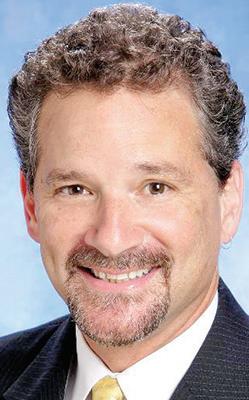
Chris Krehmeyer
Mary Carter of Pagedale, convened her peers from surrounding municipalities to begin a conversation on how to address this crisis, and she asked if we at Beyond Housing could help. Our organization had gained her trust in the years prior through our community development work in Pagedale which included building 100 new homes. She told her peers that we could be trusted and would be a good partner. From there a radical conversation began about how these 24 cities could work together.
These discussions grew to include residents and other stakeholders. What resulted was more than a community, it was a movement.
Flash forward to present day. Our region is still talking about its same challenges. Yet the 24:1 Community, despite enormous challenges,
is moving forward. Together with the community and many partners we have raised and invested more than $150 million into the 24:1. Together we built hundreds of new homes and rehabbed hundreds more. Together we built a cinema in Pagedale along with two senior centers, a Midwest BankCentre, Affinia and BJC health centers, and Carter Commons which is home to several minority-owned businesses. Many families have found greater success as we work to strengthen more through holistic services provided to families in 509 affordable rental homes throughout the community. Together, we began to change the narrative. Working together also gave us greater power to stand up when we needed to. During the 2020 education crisis in the Normandy school district, the 24:1 Municipal Partnership — a partnership of local mayors and leaders — and hundreds of resi-
See ST. LOUIS, B2
Aaron Williams named chair

Aaron Williams, project manager at Penn Services, LLC, has been named chair of the Urban Land Institute St. Louis (ULI STL) District Council. He is a member of ULI’s national public private partnership product council and recently completed a leadership position with ULI’s UrbanPlan curriculum update. He has helped manage several local and global projects during his construction management career including new facilities on the BJC Medical Campus, major high-rise residential projects such as the apartments at Ballpark Village and the 100 North Kingshighway project.
Sims-Williams hired at Affinia Healthcare Aaron Williams
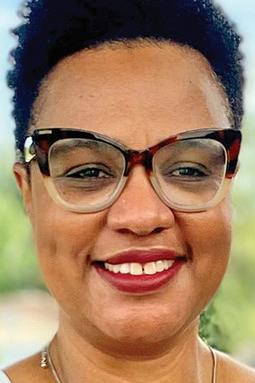
Sharifah SimsWilliams
Affinia Healthcare has selected Sharifah Sims-Williams as director of communications. Sims-Williams will oversee all communications involving the organization including the development and implementation of communications and marketing strategy. She was previously director of community relations at the Normandy Schools Collaborate, and prior to that was a communications specialist at Hazelwood School District. SimsWilliams has a BA degree in communications and media studies from the University of Missouri-Columbia and an MA in management and leadership from Webster University.
Koch named interim executive director

Stephanie Koch has been named interim executive director of The Luminary. She joined The Luminary in April 2021 to oversee the exhibitions and residency program and has additionally dedicated her time to visioning new programs such as the ProcessAs-Practice and The Arts Writing Residencies, forging new institutional partnerships with the Black Embodiments Studio and Burnaway. Koch relaunched in-person engagement after a long hiatus through an ambitious series of programming, including the opening of Know/How Books + Print and hosting Black Coffee to create more welcoming spaces in the gallery.
Lewis-Thompson named as New Voice
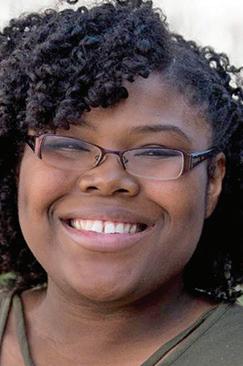
NPR’s Marissanne Lewis Thompson has been picked as one of AIR’s (Association of Independents in Radio’s) new 2022 class of 16 New Voices. Since 2009, the New Voices program has paired industry leaders with underrepresented and early-career media makers to connect, reflect and engage on their creative journeys. Lewis-Thompson is an award-winning audio reporter, producer, and newscaster based in St. Louis. Her work has appeared on NPR’s Morning Edition, Code Switch, and Side Effects.
Promotion, board appointment, new hire, award... please submit your People on the Move item (including photo) to kjones@stlamerican.com


St. Louis ranks as one of the worst cities for women in tech
By Kate Grumke St. Louis Public Radio
Two local organizations are partnering to try to even the playing field for women in the technology sector after a national survey found St. Louis is one of the worst cities for gender equality in that field.
A SmartAsset survey last month found women working in technology in St. Louis are paid less than men and are more underrepresented compared to other cities around the country.
The financial website ranked St. Louis 54th out of 59 cities.
TechSTL, a council for technology companies, and Rung for Women, a nonprofit career accelerator, are launching an effort to address this problem. They’re starting with a survey for working women in the St. Louis region to learn how the city can do a better job supporting women in tech and in the workforce more broadly.
There are already steps companies could be taking to address pay disparity, including publicly posting salary ranges on job openings, said Rung for Women President Leslie Gill.
“Many of the folks sitting in those seats around recruitment and decision-making obviously don’t look like me,” Gill said.
“We just really want to work with employers to gather the data so that they can make informed decisions around how to do better.”
This issue doesn’t just affect women seeking opportunities. Tech in St. Louis ranges from agricultural tools to artificial intelligence. But the lack of diversity in the workforce is holding St. Louis’s tech community back, said Emily Hemingway, executive director of TechSTL.
“Innovation is not something that can just be solved by one group of people, especially if you want to be competitive,” Hemingway said. “This is a
Continued from B1
knocks’ and received hands-on experience with several noted chefs. His zeal for cooking grew, and he was inspired to open a restaurant specializing in wine and small plates.
He journeyed back to St. Louis in 2019, bringing along his ambition to open his restaurant. Shed said he searched “high and low for the perfect location,” and came across the Carondelet neighborhood. He calls it an untapped area that is not oversaturated in fine dining.
Continued from B1
dents led the charge for greater accountability and a change in district leadership, along with the right for residents to elect leaders on the district’s Executive Governing Board.
In 2015, twelve municipalities in the 24:1 filed a lawsuit to challenge Senate Bill 5. The
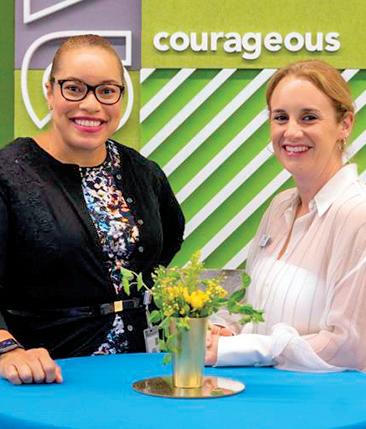
fast-moving industry, which means we need all the best ideas at the table and all the perspectives that we can find.”
That includes focusing on education and developing the workforce pipeline, to make sure women are being encouraged to get into STEM jobs. There is an opportunity to greatly increase these efforts in the region, said Bronwyn Morgan, CEO of Xeo Air, a company that uses drones to collect geospatial and other data.
“Are we actually preparing women for these roles in our companies, actively recruiting and hiring for women in these roles?” she said leaders need to be asking themselves. “As tech is growing here in the city and
“The cafe is right in the middle of where I need it to be.
The cafe lets the neighborhood know what to expect from my restaurant; it’s the cafe on the corner,” said the cafe owner.
He says the Wine Down Cafe offers fine wine, good energy, quality service, and great food.
His Brussel sprouts are not your typical little green cabbages that children sometimes push around a plate hoping they will disappear. Wind Down’s are sauteed with a little twist. Shed tops them with crushed pistachios “and people love it”
“It doesn’t feel like work, I enjoy rocking these dishes out,” said Shed.
He says good food doesn’t
bill unfairly capped traffic fines at 12.5% of the municipalities’ operating revenue compared to 20% elsewhere in the state.
Had we not stood up together, Bill 5 would have crippled the budgets of these smaller communities and made it difficult for them to survive.
Things are far from perfect, but they are far different than before. The 24:1 Community is living proof of what can be achieved when people real-

in the region, it needs to have a bigger focus and emphasis on women.” Morgan said the tech industry has problems with gender diversity across the country.
“I think that women are not necessarily the first choice when it comes to opportunities for tech roles,” she said. “If we continue down that path and we miss out on 50%-plus of the workforce, I don’t know how companies will ever be able to sustain themselves and really be able to reach their markets at large.”
As the organizations collect data, they say they plan to use it to make recommendations to companies.
have to be pricey, and he purposely keeps his prices affordable so that families can enjoy his food and kick back and have a good time.
“I brand my restaurant as affordable, and I will stick with that,” he said. Shed says diners often request Rum Punch, which is inspired from his time in New York and has quite a kick.
“Wine Down Cafe is a place where people can gather, hang out, have a glass or bottle of wine, enjoy some good small plates and just chill,” he said. Shed hopes to franchise his enterprise in the future, and he’s considering areas in North County and Chesterfield for new locations.
ize their collective power and begin working together. When people decide it’s time to act because no one else is going to do it for them. When everyone understands that an investment in one part of a community is a step forward for the collective whole. That is an example our region needs to follow.
In my last article, I wrote that if a rebirth of St. Louis is going to happen, it will start within our under-resourced communities. We have invested significantly in St. Louis in the last several years.
As Midwest BankCentre Chairman and CEO Orvin Kimbrough recently said in an event Beyond Housing sponsored with the St. Louis Business Journal, “If we really get serious about aspects of our region that have been left behind, we’re going to be a world-class city once again.” No matter where we live in this region, we are part of a greater whole. A whole that is only as strong as all of us put together. When the rest of St. Louis understands this as well as the people in the 24:1 Community do, we will finally move our region forward, once and for all.
Chris Krehmeyer is Beyond Housing president and CEO
By Earl Austin Jr.
We are about a month away from beginning another exciting year of high school sports in the St. Louis metropolitan area. As we get ready for the upcoming season, it is time to take a look back at what we witnessed during the 2021-22 school year. Here is our annual St. Louis American Prep Year in Review.
Football The CBC won their third Class 6 state championship in five years with a dominating 48-21 victory over Liberty North. After an opening-season loss to metro-east powerhouse East St. Louis, the Cadets rolled off 13 consecutive victories en route to the state championship. CBC had a myriad of standout performers such as quarterback Patrick Heitert, running back Jeremiyah Love and defensive stalwarts Tyler Gant and Justus Johnson.
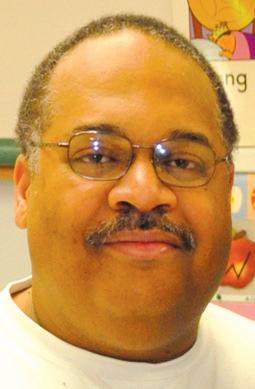
St. Mary’s made history by winning its first state championship in football with a dominating run in Class 3. The Dragons were scoring 50-60 points a game while their defense was giving a touchdown a game. They were led by the super talents of senior Kevin Coleman and a host of other skilled players such as quarterback Caron Spann and running back Jamal Roberts. The Dragons defeated St. Pius 56-0 in the championship game. Lutheran St. Charles made history by winning the Class 2 state championship, which is a first for the school. The Cougars did it in dramatic fashion with stellar senior running back scoring a touchdown in the closing seconds of a 33-27 victory over perennial state power Lamar.
Boys Basketball
The Vashon Wolverines added another state championship to its expansive trophy case as they won the Class 4 state crown with a thrilling victory over Father Tolton. The Wolverines were a young and inexperienced team, but they came together to win another state title behind talented players such as juniors Kennard Davis Jr., Jayden Singleton and Cameron Stovall. It was the 13th state title for Vashon, which includes its current roll of state championships in 2016, 2017, 2019, 2021.

The CBC Cadets dominated the field in Class 6 as they won the state championship with convincing victories of Chaminade and Nixa at the Final Four in Springfield. The Cadets were led by super senior point guard Robert Martin, who was the St. Louis American Player of the Year. CBC also got big contributions from senior guard Larry Hughes Jr. and 7’2” sophomore center John Bol. Webster Groves brought home the Class 5 state championship, which was the third state championship in six years for the Statesmen. After knocking off two-time state champion Cardinal Ritter in the state semifinals, the Statesmen blitzed Jefferson City Helias in the championship game. The Statesmen fielded a well-balanced team, which was led by senior guards Matt Enright, Ethan Chartrand and talented underclassmen Iziah Purvey and CJ Lang.
Basketball The Incarnate Word Academy girls dynasJULY 21 – 27,
ty continued to roll on in 2022 as the Red Knights lapped the field in winning its second consecutive Class 6 state championship. Not only did the Red Knights win another state title, but they finished the year ranked in the Top 10 in the national polls. IWA will also carry a winning streak of 67 games into next season. They were led by American Player of the Year Saniah Tyler and standout forward Natalie Potts.
John Burroughs made history by winning the Class 4 state championship, which was the first in girls’ basketball in the school’s history. The Bombers had a talented group of guards, led by Allie Turner, Monet Witherspoon, Sydney Starks and BreAunna Ward.
Girls Track and Field
Cardinal Ritter College Prep dominated the Class 5 field once again as they repeated as the state champions. The Lions beat
With Alvin A. Reid
The Vashon Wolverines added another state championship to its expansive trophy case as they won the Class 4 state crown with a thrilling victory over Father Tolton.
their nearest competitor by 45 points. The talented Lions team was led by sophomore sensation Aniyah Brown, who was the state champion in the 100- and 200-meter dashes.
Parkway Central won its first state championship by taking home the Class 4 crown in convincing fashion. The Colts were sparked by its talented crew of sprinters and hurdlers, led by Kayelyn Tate and Skyye Lee, who brought home individual state championships in their events.
Westminster Christian made history by winning the Class 3 state title, which was the first in school history. Brooke Moore was an individual standout as she won state championships in the long jump, triple jump and the 100-meter high hurdles.
Boys Track and Field
Principia and Westminster Christian brought home state championships in Class 1 and Class 3 respectively. Principia was led by sprinting sensation Issam Asinga while Westminster won on the strength of his talented field event athletes.
St. Louis American staff
The XFL hosted an inviteonly showcase at Jackson State University on July 16 for HBCU football players, and league co-owner Dwayne «The Rock» Johnson said he would have jumped at an opportunity like that.
“On a 55-man NFL roster, I was always guy 56,” he told ESPN during the showcase. Johnson was a linebacker at Miami University.
Still no word if St. Louis will get team
Notable former HBCU players that participated
Aqeel Glass, Alabama
A&M, quarterback: The SWAC player of the year threw for 3,568 yards and 36 TDs against 7 interceptions last season. He threw for 400 yards or more five times and went 259-414 passing.

The XFL made its debut in 2001 and folded after one season. The league came back in 2020 and St. Louis was home to its most successful franchise. It became a pandemic casualty, but its return is set for February 2023. While the XFL has announced it will have eight teams, and its coaches have been hired, there still is no word where the teams will be located. It is a waiting game for St. Louis.
“There’s a different kind of hunger and grit with HBCU players,” Johnson said.
““We had a great time showcasing those players... not only meeting their dream with our opportunity but letting them know we care
Keonte Hampton, Jackson State, linebacker: The former SWAC player of the year recorded 79 tackles and four sacks in helping the Tigers reach the Celebration Bowl.
Tyrin Ralph, Arkansas Pine-Bluff, receiver: Ralph was an FCS second-team AllAmerican selection in 2021. He had 892 all-purpose yards, including a career high 279 against Mississippi Valley State.
David Watford, Hampton, quarterback: Watford signed with the Philadelphia Eagles as an undrafted free agent in 2016 but was released in 2017. He has four years of experience playing in the Canadian football League with the Saskatchewan Roughriders and Hamilton Tiger-Cats.

NFL, Ice Cube initiative
The National Football League is partnering with Contract with Black America Institute, an economic inclusion-focused initiative led by artist and entrepreneur O’Shea Jackson, also known as Ice Cube. The CWBA and NFL partnership enhances the NFL’s dedication to increasing economic equity and partnerships
with Black owned businesses.
“For more than a year, the CWBA Institute has been working closely with the NFL on identifying resources to build stronger, more substantive economic partnerships with the Black community,” said Ice Cube. “Our team at CWBA is focused on building corporate partnerships with measurable economic growth outcomes for Black commu-
Former University of Arkansas-Pine Bluff receiver
Tyrin Ralph was among the former HBCU players that were invited to an XFL showcase event at Jackson State last week.
nities across the country. We believe this is a giant step in the right direction.”
The NFL has spent and allocated $125 Million with Black owned and operated businesses such as Ariel Investments, CityFirst/Broadway Bank, Cover Communications, and Fearless Technology during the last year.
“City First Bank is pleased to have formed a strategic
partnership with the National Football League and Contract With Black America,” said City First Bank President & CEO Brian Argrett. “This partnership supports and accelerates each organization’s commitment to ensuring that minority businesses have access to capital and opportunities to fuel their growth. Partnerships like this are critical to driving equitable economic change within the Black community as well as supporting the growth of City First Bank and other Black-led and Black-owned financial institutions that deploy capital for economic growth and empowerment.”
“Our partnership with CWBA is another reminder that partnering with intentional organizations is critical to everything we do at the League,” said NFL Commissioner Roger Goodell.
“Black businesses play a leading role in our country’s economic prosperity. We understand these businesses have not always had the opportunity for exponential growth, so we are pleased to have partners like Ice Cube and his organization, CWBA, in a continued, collective push toward greater economic inclusion.”
By Steve Walentik UMSL Daily
The Cigna Foundation is helping the University of Missouri–St. Louis continue its longstanding efforts to prepare area high school students of every background for college success through the Bridge Program‘s Saturday Academy The charitable arm of Cigna, the parent company of longtime Bridge Program benefactor Express Scripts has awarded a $200,000 grant to continue supporting the free program, which has been providing college preparation courses since 1986.
“We’re proud that the Cigna Foundation will continue what the Express Scripts Foundation started seven years ago,” said Susan Stith, president of the Cigna Foundation.
“By partnering with the UMSL Bridge Program, we’re able to address and positively impact the education and workforce development of high schoolers in St. Louis. We know that if we can help advance students from high
For the third consecutive year, Saint Louis University was recognized by the Women’s Foundation of Greater St. Louis (WFSTL) as a top place for women to work.
This is WFSTL’s fifth annual “Women in the Workplace: Employment Scorecard.”
SLU was recognized as one of four large St. Louis employers demonstrating excellence in four areas of workplace gender equity – leadership, compen-
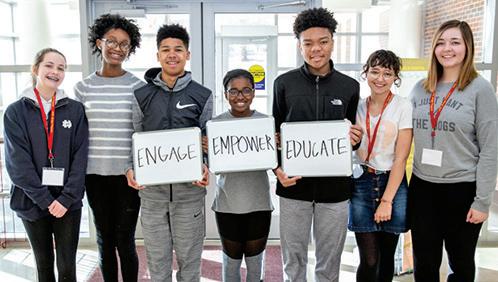
school to college, and help them stay there, they will live happy, healthier, longer, more productive lives as adults – and their success will impact and influence future generations to come.”
Last year, 272 students, including 53 seniors, completed
the program virtually, taking classes in mathematics, science and written and oral communication. Bridge also places a strong emphasis on career, personal and professional development through additional structured courses for all participants in the Saturday
Academy.
Participating parents also had the opportunity to take part in variety of well-rounded workshops specifically designed to provide effective strategies for supporting the growth and development of their college-going students
Last year, 272 students, including 53 seniors, completed the program virtually, taking classes in mathematics, science and written and oral communication.
through the Bridge Program Saturday Parent Academy
“Our tagline – Engage. Empower. Educate. – is in optimal practice during the Saturday Academy where 700+ students and parents are immersed in timely workshops designed to prepare them
sation, flexible work policies, and recruitment and retention.
The other 500-plus employee institutions honored this year include Graybar, Maritz and Enterprise Bank & Trust. “We are honored to be recognized once again as a top place for women to work in the St. Louis area,” said Mickey Luna, vice president of human resources at SLU. “This award affirms our ongoing efforts to make
SLU an inclusive and equitable workplace.”
Luna said he is particularly proud of the implementation of the University’s Interim Flexible Work policy and the increasing number of women in senior leadership at the University over the past year.
“We are grateful to WFSTL for this opportunity to highlight the work SLU and other local employers are doing to make our workplaces attractive to

women and supportive of their advancement.”
The Women in the Workplace Scorecard recognizes 24 small, medium, and large companies in the St. Louis region that showed a strong commitment to women in the workplace through measurable outcomes, key policies, and best practices. Criteria include demonstrating results with women in a minimum of 28 percent of top leadership roles;
a minimum of 25 percent of women in the top 10 percent of the most highly compensated employees; a starting wage higher than the Missouri minimum wage; family-friendly flexible work policies; and recruitment and retention programs targeted at advancing women.
Unlike many “Best Places to Work” reports that rely on employee opinion surveys, the Women in the Workplace:
for the road ahead,” Bridge Program Director Channon Peoples said. “The Cigna grant is helping us open the door to the many possibilities of postsecondary education by providing project-based STEM learning opportunities, ACT preparation, writing and dialogue strategies, college preparation, and career development.”
The Saturday Academy is held on the first two Saturday mornings each month from October through February, and the Parent Academy takes place on the first Saturday morning each month.
Since 2003, 100% of graduates from the Saturday Academy have matriculated to college. Members of this year’s senior class were admitted to more than 120 colleges, universities and other institutions of higher education nationwide. More than 70% of them received two or more scholarship offers with 15% receiving full-tuition scholarship offers. Notably, approximately 54% of Bridge participants attend UMSL annually.
Employment Scorecard looks at objective criteria and outcomes. Through a blind data review process by a six-person panel, the Scorecard evaluates company employment practices and their impact on gender diversity. Designated organizational representatives were asked to answer specific questions based on existing policies, practices or employee data.


By Kenya Vaughn The St. Louis American
Jenifer Lewis is not just a star; she is an experience. And the Kinloch native lived up to her glorious reputation as her name joined the Hollywood Walk of Fame on the afternoon of Friday, July 15.
Wearing a lime green ensemble as bright as the California sun, Lewis became the 2,726th to have the highly coveted, worldrenowned distinction. She laughed, cried and sang – a few times all at once –during her acceptance speech. And when her star was revealed, she effortlessly landed several sixo-clock kicks for the cameras. Lewis even offered instructions to photographers so that they captured the image just as her ankle reached her ear.
She was true to her rare form as family, friends, fans and supporters gathered at her newly minted star. And leave it to Jenifer Lewis to have the festivities fall on July 15 –a day designated as Jackie Washington Day in her 1999 Lifetime Television cult-classic mockumentary film “Jackie’s Back.”
She led a cadre of fans waving yellow
Stage, television and film veteran Jenifer Lewis
Fame’s 2,726th star on Friday, July 15. The
40-plus years of contributions to the entertainment
four Broadway shows and more than 400
flags fashioned as yield signs through a verse of “Yield.” The selection was a signature hit for her has been diva character Jackie Washington. And like Jackie’s Back, her ceremony will be remembered as yet another classic Jenifer Lewis performance.
“What can one say about Jenifer Lewis that
n “People from all over the world come to see the stars,” Lewis said.
“ I did. It was the first place I came to when I came to Los Angeles.”
she hasn’t already said herself,” Tony Awardwinning composer and producer Marc Shaiman lovingly quipped. Lewis jumped from her seat on stage to the podium for an impromptu duet when he burst into one of Lewis’ original musical comedy compositions, “The Only Black Girl In Laguna.”
Shaiman pointed out that Lewis was a quadruple threat – a talented singer, actress and dancer with impeccable comedic timing.
“Little by little, Hollywood woke up to what
SSD teacher competes in plus-size women pageant
By Danielle Brown The St. Louis American
Accidents aren’t always a bad thing, and in some instances, they can be blessings in disguise that open the door to greater opportunities. This was that case for Michaela Morgan during the COVID-19 quarantine. Bored at home like the rest of the world, one day she was scrolling on Instagram when her phone froze on the Ms. FullFigured USA Instagram account.
Unfamiliar with the organization, she became curious about it. As a joke, she applied to compete. She was selected to compete to become a state titleholder but didn’t win. Losing did have a toll on her mental health at first; then she was able to reinvent herself and is now back to compete.
“If I won, I would be ecstatic because this would be my first time taking home a top crown,” Morgan said. “Fear, anxiety, and depression would lose if I won.”
Morgan, being a Black plus-size woman competing in the Ms. Full Figured USA pageant, has learned to be more confident in herself by viewing herself as competition and transforming old perceptions about herself to lift her self-esteem.
“It’s me versus being a Black girl with stretch marks and fighting against all the reasons I shouldn’t be on stage,” Morgan said.”It’s about thinking about myself and where I wanna go instead of being like, ‘Ugh, I don’t like how I look in this, I just gotta pick at myself.’”
Morgan understands the importance of her voice being heard. The pageant platform is not just for her, it’s for other plus-size Black women and young girls.
“I was surprised when I posted about the pageant on Instagram, the women and young girls who reached out to me,” Morgan said. “You
See Morgan, C8
they had in Jenifer,” Shaiman said. “And by the time she landed the perfect role of Ruby on ‘black-ish,’ she had finally become the star that she – and we – always knew she was.”
Lewis told those in attendance about a recent vacation where she visited the cultural treasures around the world. For her, the Hollywood Walk of Fame is on that list.
“People from all over the world come to see the stars,” Lewis said. “ I did. It was the first place I came to when I came to Los Angeles.” And now she permanently resides among them. The honor came more than 40 years after Lewis graduated from Webster University (then Webster College) and set off with the intent of sharing the gift of her creative force. It was something she felt led to do since the tender age of five when she sang her very first solo at the First Baptist Church of Kinloch.
“I stood there – with my thumb in my mouth – and I thought, ‘This is the life!’ And I never looked back,” Lewis said. “I love life, and I love that I got to do what I love with my life. And I know that I am one of the lucky ones.”
Her career has spanned 68 feature films, four Broadway shows and more than 40 ani-
See Star, C8
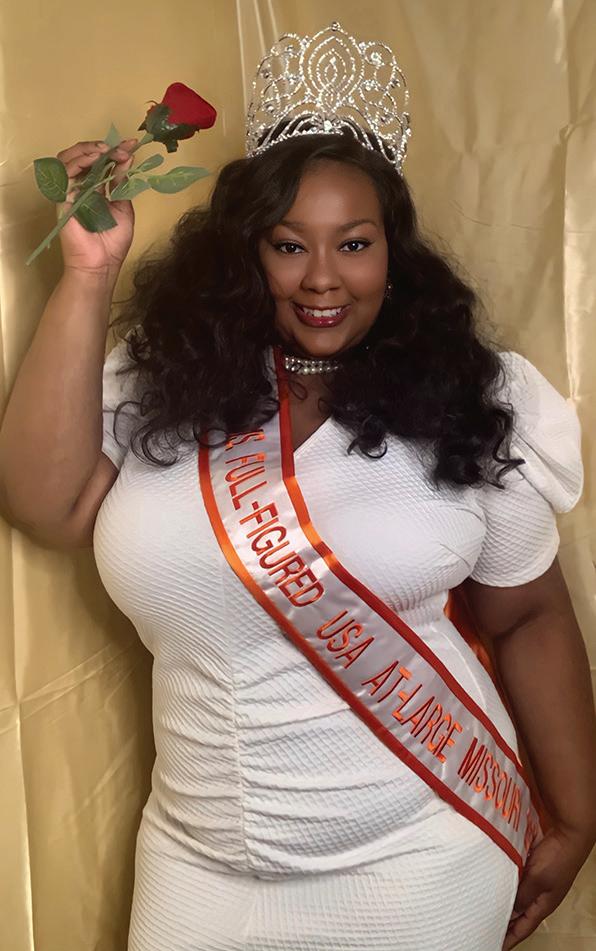

By Danielle Brown The St. Louis American
Covering timeless songs usually requires skill and artistry because “everybody ain’t able.” Sometimes artists miss the mark when it comes to creating their own renditions—generally, the artists’ version doesn’t meet the expectations of the original, or they try way too hard to sound like the previous track.
Remixing a song completely by revamping its arrangements while still nurturing its message is the ultimate flex. Amber B’s “Remixed with Amber B” show last Thursday at The Dark Room left the audience wanting to hear more of her vocal and musical reworkings of classics like Angie Stone’s “I Wish,” Stevie Wonder’s “Do I Do,” and more.
She graced her way to the stage in an edgy chic gear consisting of a curve-hugging Black leather dress with glamorous gold accents and a long platinum blonde knotless braid ponytail. Her stylish fashions and beat makeup may have made her look the part, but it was her stellar vocal prowess and control that kept everyone’s eyes on her.
Joined by her band, Keith Fowler (keys), Sean Robinson (bass), and Reginald “Tank” Brown (drums), Amber opened the show with a more uptempo performance of Brandy’s “I Wanna Be Down.”
n Amber, who received her musical training growing up in church, never proclaimed herself to be a jazz singer, but her talent shows she could if she wanted to.
She followed up with a spooky, trap rendition to Stone’s neo-soul, heartbroken classic, “I Wish.” Occasionally, Nina Burgess joined her on stage, assisting with background vocals. Wayne Thornton, producer and engineer based out of Atlanta, mixed and mastered the remixes with the help of Burgess’ background vocals on the tracks. The harmonies of the dynamic sister duo showcased Amber’s distinctive raspiness and diverse vocal range. It was a perfect recipe for an evening of grown and sexy vibes for mature crowds who appreciate hearing raw and authentic live music.
“It’s all about being free tonight,” Amber told the audience while an ethereal techno version of Fantasia’s “Free Yourself” played. “It ain’t even gotta be free from a man or woman, but just being free on the inside.”
Amber, who received her musical training growing up in church, never proclaimed herself to be a jazz singer, but her talent shows she could if she wanted to. From her scatting to her ability to modulate her voice to the heavens, she kept the room entertained with a remix of Carl Thomas’ “Summer Rain.”
“The signature on this one is different; instead of a four-four time signature, it’s seven beats to a measure,” Amber said.
She cleverly did a mashup of “Summer Rain” with SWV’s “Rain,” offering a playful and passionate piece for all the lovers and singles in the house that night.
Who knew James Brown’s “I Feel Good” could be reimagined as a big band swing, a bold take on the soul original? Amber stunned the crowd once again with another jazz-inspired cover.
Other songs she covered included: Jill Scott’s “The Way,” and “He Loves Me,” “Smooth Operator” by Sade, “Just Friends” by Musiq
weekend.

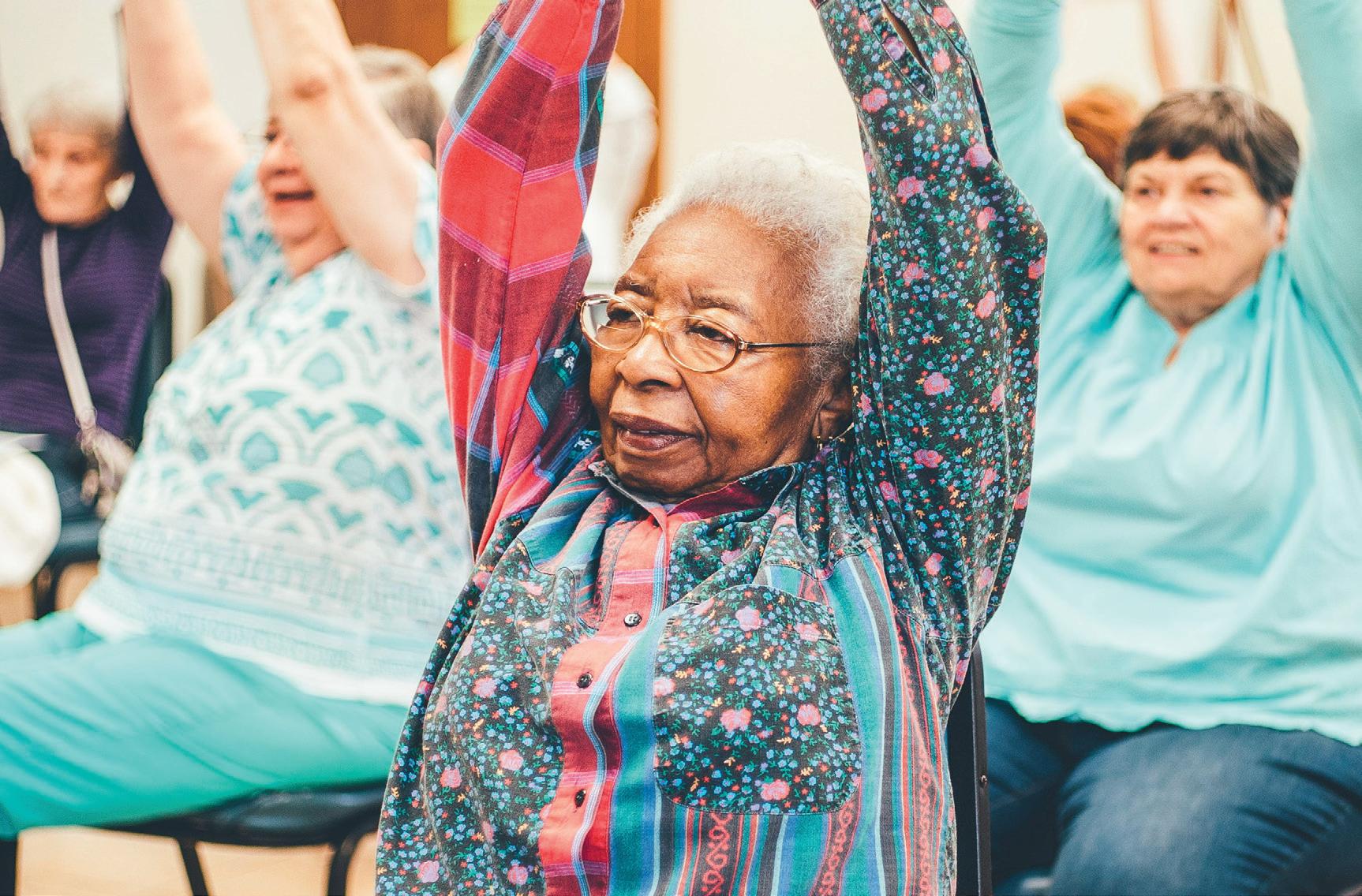
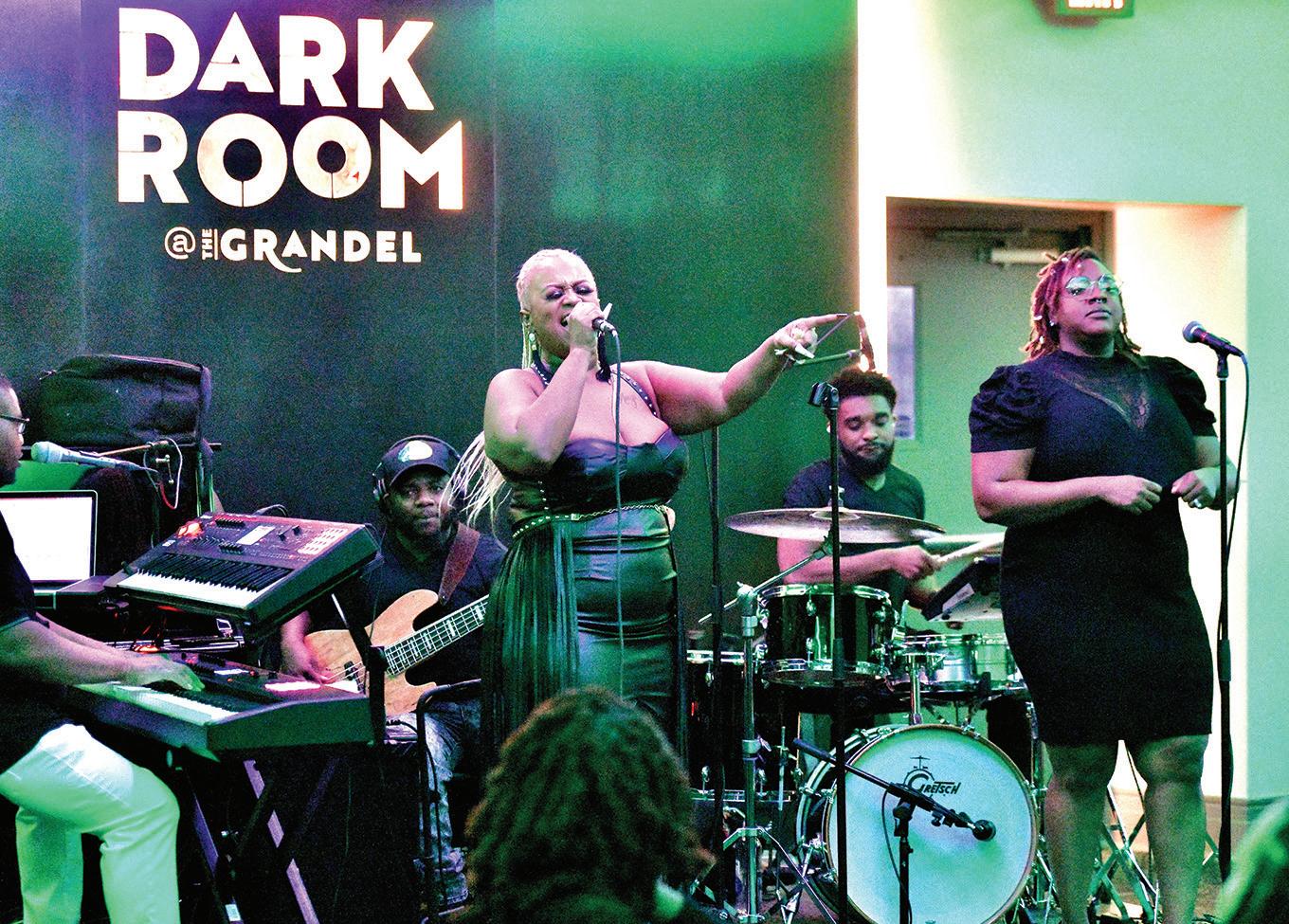
Continued from C1
Soulchild, “On & On” by Erykah Badu, and Anita Baker’s “Sweet Love.” She closed “Remixed by Amber B” with Mary J. Blige’s “My Life” and Jill Scott’s “Golden.”
“This song [“My Life”] is really special for me,” Amber said. “I wanted to sing something that meant something to me. I’ve always loved “My Life,” it just came to me.”
Amber grew up in a strict Seventh Day Adventist household. She attended schools within the religion until high school. She attended Riverview Gardens High School and went to Seventh Day Adventist colleges. Attending St. Louis Northside Seventh Day Adventist Church is where she developed her love for music and singing.
“Growing up in church, if you can sing, you’re supposed to sing gospel music,” Amber said. “I’ve always loved music, and my mother was a singer; seeing her do it all the time sparked my interest.”
A decade ago, Amber introduced herself to the world by winning Season 4 of BET’s “Sunday Best,” a gospel music singing competition.
In an interview with The St. Louis American, she said the opportunity came about from deciding not to relocate to New Orleans with her mom, who received a job offer there while they were living in Texas. Rather than move to NOLA, Amber decided to move back to St. Louis, where she temporarily lived with a friend. That same friend is the one who drove her to audition for the BET show, and the rest is history.
“Winning ‘Sunday Best’” was a life-changing experience for me,” she said. “I’m still able to work today because of

it. When I walk into a room, people know who I am. It afforded me so many great opportunities and still affords me great opportunities. With strong gospel roots, some may find it surprising to see Amber make the transition to R&B, but for her, it makes a lot of sense.
“I wanted to be more authentic with what I sing and my lifestyle, I wanted those to match,” Amber said. “I want people to feel what I’m singing and it wasn’t translating with me with the gospel. I want to sing to people who have that balance and those who may not say “Ooo Jesus,” when they fall, but instead, they might say “Oh [expletive].”
Amber will join Theresa Payne, Taynka MiMi, and Tracy Smith for a Beyoncé tribute listening party on July 29 at Live by Loews.
For tickets and more information visit Eventbrite.



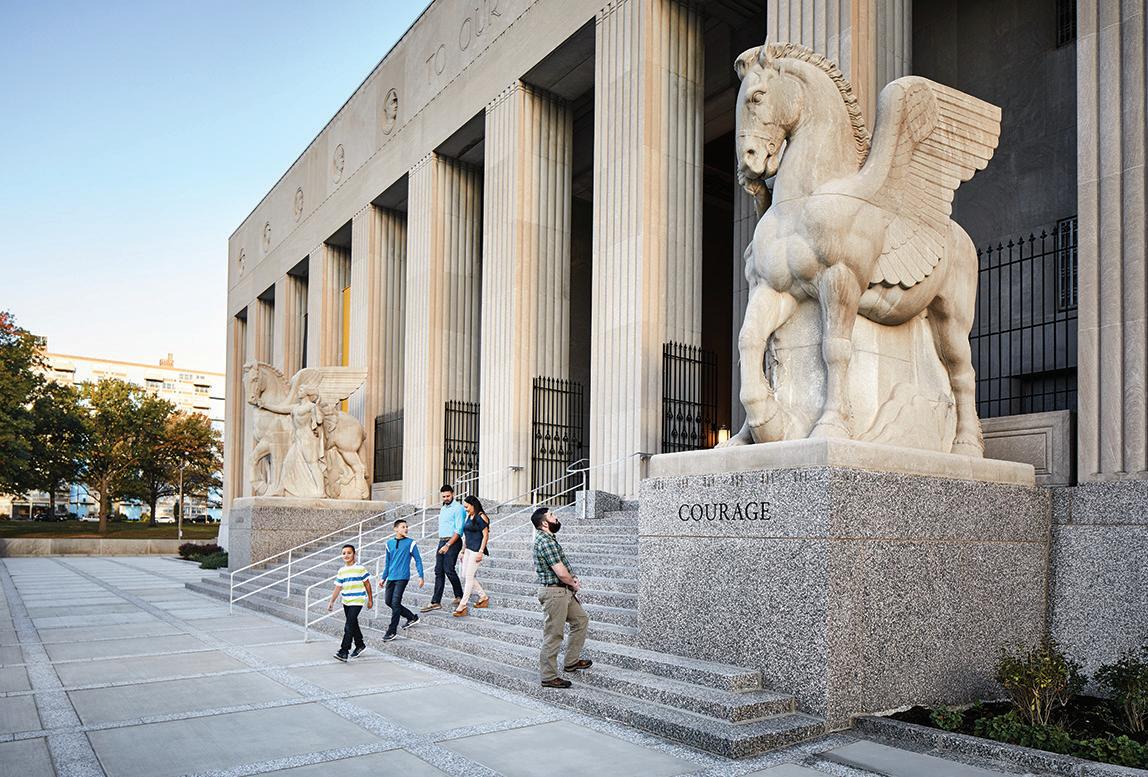
By John Ermold, Soldiers Memorial Military Museum
Press Tyler Jr. was born in St. Louis on August 20, 1948, nearly two years before the beginning of the Korean War on June 25, 1950. Long after the war’s cease-fire on July 23, 1953, he was gunned down by North Korean troops in South Korea in 1967. He was 18 years old.
Tyler attended Beaumont High School in St. Louis, where he especially enjoyed playing basketball. He enlisted in the US Army in 1965 and received training at both Fort Leonard Wood, Missouri, and Fort Ord, California, before being deployed to South Korea.
Following the deaths of 36,516 US military personnel since the start of the Korean War, the warring parties except for the South Korean government finally agreed on a cease-fire on July 23, 1953. In accordance with the terms of this armistice, a 4,000-yard-wide (about 2.3 miles) demilitarized zone (DMZ) was established, which extends from coast to coast across the Korean Peninsula. South Korea, however, was unwilling to accept a divided country and did not sign the armistice to officially end the war. Demonstrating long-standing support of South Korea, US forces have remained in the country since then.
sion Band, Tyler’s friends (including Sergeant Detuncq) and general officers from Headquarters 8th US Army and the 2nd Infantry Division. As the customary expression of a nation’s gratitude for a fallen soldier, there was a three-volley salute and a “dip of the division colors,” which is lowering a flag and returning it to place in a salute. A bugler played “Taps,” the song that has been a tradition at military funerals since the Civil War and was designated the National Song of Remembrance in 2012.
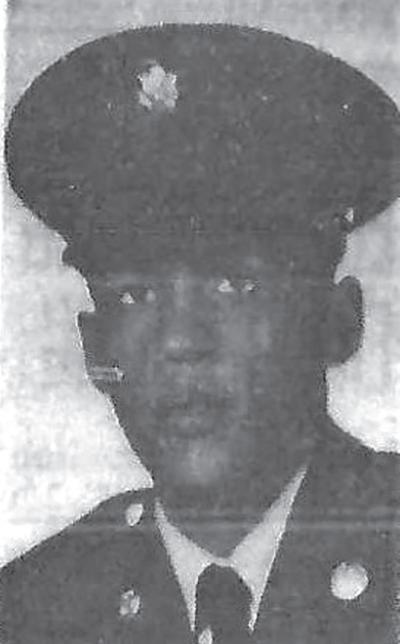
On February 12, 1967, Specialist Fourth Class Tyler was part of a 2nd Infantry Division patrol in South Korea. The nine men on patrol were led by Sergeant Edward Detuncq, who to this day remembers Tyler with fondness and respect. The patrol was moving into position about one mile south of the DMZ, unaware that North Korean troops were lying in ambush. At about 3:45am, the North Koreans directed 8 to 10 rounds from automatic weapons at the Americans. The patrol returned fire, and the enemy fled back into North Korea.
Tyler was the only member of the nine men to be killed or injured. When confronted with the facts of the ambush, the North Korean government denied the event had ever occurred.
Two days after the attack, a chaplain delivered a eulogy at a memorial service before Tyler’s remains were placed onboard a plane for the flight from Kimpo Air Force Base to the United States. Also participating in the memorial service were a 54-member honor guard, the 2nd Infantry Divi-

Specialist Tyler was laid to rest at Jefferson Barracks National Cemetery in south St. Louis County. In April 1967, he was posthumously honored with the Purple Heart medal, which was presented to his parents, Press Tyler Sr. and Rose Ann Tyler. In addition to his parents, he was survived by two brothers and four sisters. In the decades following the 1953 armistice, North Korea has conducted numerous violations. For example, in 1968 North Koreans seized the naval vessel USS Pueblo in international waters almost 16 miles off the coast of North Korea. The 83-member crew was tortured and held in captivity for 11 months before being released. In August 1976, two US Army officers were killed by a North Korean attack. In 2011, South Korea stated that North Korea had violated the armistice agreement 221 times. And, of course, the North Korean government has been adamant in its denials of deadly events south of its border, such as the ambush that claimed Tyler’s life in 1967.
On Memorial Day 2022, Soldiers Memorial Military Museum honored Specialist 4th Class Press Tyler Jr. by sharing his story in an oral presentation with photographs, commemorating his service and ensuring that the sacrifice he and his family made will not be forgotten.
John Ermold is a Webster Groves resident.
Inspired by a wish to honor military personnel and their families, especially those who made the ultimate sacrifice in service to their country, he has been a volunteer at Soldiers Memorial Military Museum since 2018, serving as a docent and assisting with research projects and special events. To learn more about the Missouri Historical Society’s volunteer program, visit mohistory. org/job-seekers/volunteer.




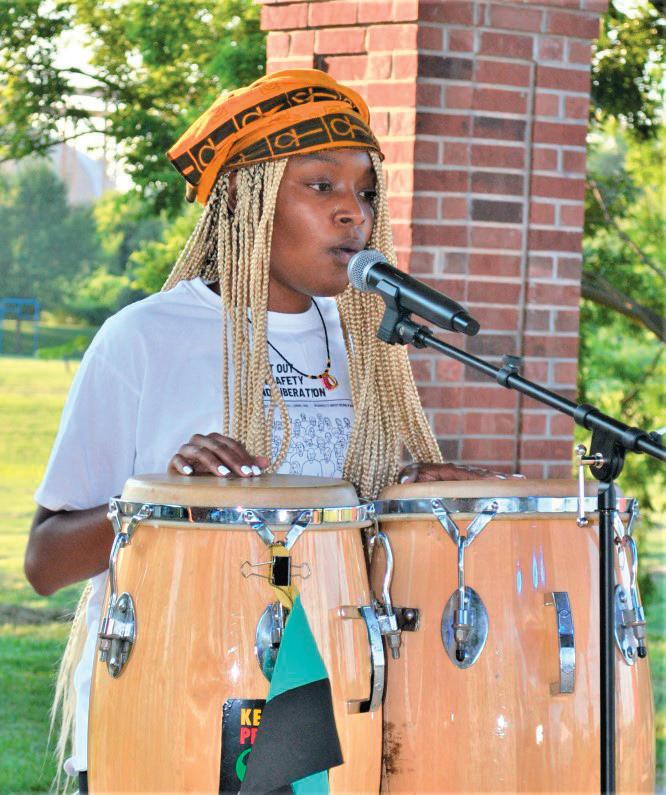

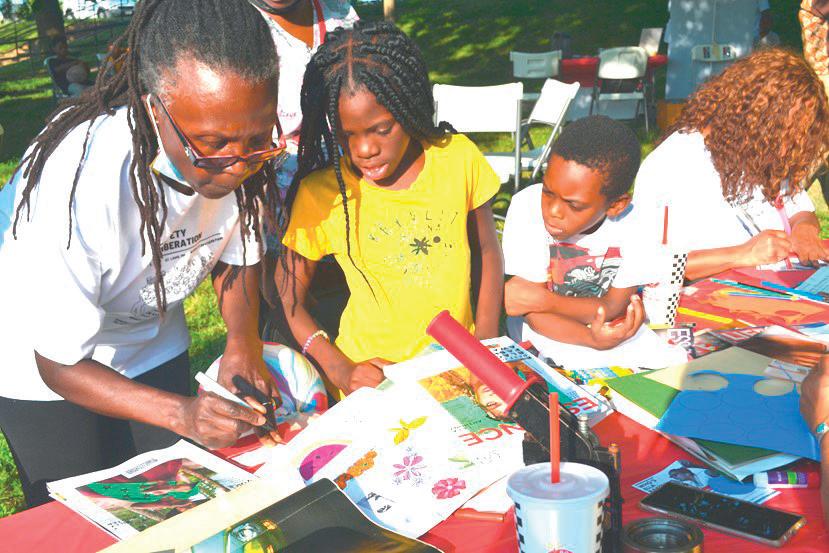

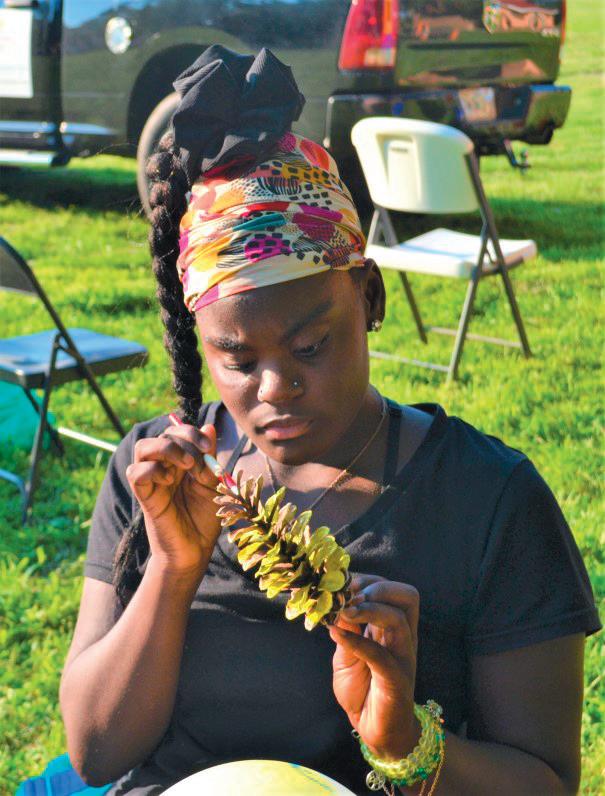






By Deepa Bharath LA Focus News
Nate Looney is a Black man who grew up in Los Angeles, a descendant of enslaved people from generations ago. He’s also an observant, kippahwearing Jew.
But he doesn’t always feel welcome in Jewish spaces — his skin color sometimes elicits questioning glances, suspicions, and hurtful assumptions. Once, he walked into a synagogue dressed for Shabbat services in slacks and a buttoned-down shirt and was told to go to the kitchen.
“The last thing you want to happen when you go to a synagogue to attend a service,” Looney said, “is to be treated like you don’t belong.”
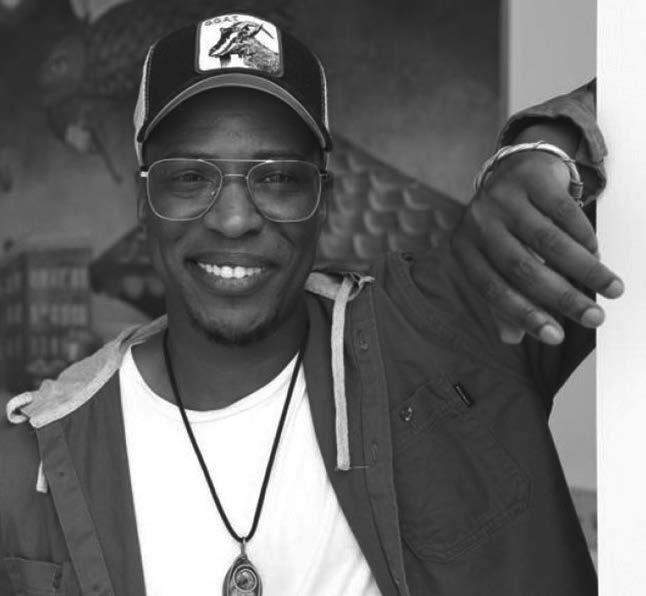
Now Looney can do something about that, after being named to the new role of director of community, safety and belonging for the Jewish Equity Diversity and Inclusion team at the Jewish Federations of North America, or JFNA, in April. In this new role, Looney has been tackling the delicate task of producing guidelines on how to be more welcoming of Jews of color, even as synagogues and community centers strengthen security in the wake of recent attacks including mass shootings in Pittsburgh and Poway, California. The concern is that such boosted security increases the likelihood of racial profiling incidents affecting congregants of color.
It’s a small but growing demo-
By Dr. Preston T. Adams III
“46 Day after day they met in the temple [area] continuing with one mind, and breaking bread in various private homes. They were eating their meals together with joy and generous hearts.” -Acts 2:46
The way we “do church” dramatically changed forever when 2020 ushered in a global pandemic. Churches around the world were forced to shut down in-person services and move into all virtual spaces. Social media platforms became the primary means for pastors to remain connected with our flocks.
In a recent discussion with one of my ministry sons, Bishop Jerome Taylor, senior pastor of
the NU Destiny Christian Church (Indianapolis), we contemplated this newest pastoral leadership reality.
Shaping the discussion was a sobering statistic: “After shutting down in-person gatherings for even a few months, 30-50% of our congregations disappeared” (Carey Nieuwhof). In the Book of Acts we are reminded of how Christians gathered. Churches in biblical times were typically small in number and gathered in the temple (church) and homes (virtual) of their respective Christian communities. This reminder led to Bishop Taylor and I discussing a few strategies that I’d like to share. First, we must maintain the hybrid model (in-person and virtual) approach to serving our parishioners. When the
graphic. A Pew Center survey in 2021 showed just 8% of U.S. Jews identify as Hispanic, Black, or Asian, but that nearly doubled to 15% among respondents aged 18 to 29. The poll also found that 17% reported living in a nonwhite or multiracial household.
Looney, 37, says his spiritual jour-
pandemic began trending toward an endemic, many pastors thought we could end virtual options as a means of drawing people back to the pews.
In my observation this strategy is an unsuccessful strategy. People have become accustomed to accessing church from home.
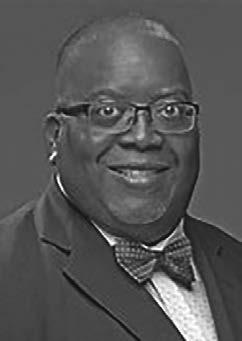
It also doesn’t help that as I pen these words, the average price of gas is well over $5 per gallon. This adds an economic consideration into a family’s decision as to whether they drive to a church facility versus participating in church online.
Additionally, some people are still fearful of gathering in public spaces. The hybrid model allows pastors


ney began at 13 when a friend asked Looney, whose father was Baptist and mother was Episcopalian, about his own religion. Despite his family’s Christian faith, Looney said he never felt connected to it.
Looney embraced Judaism while still a teen because he viewed it as a faith that gives believers permission to ask difficult, uncomfortable questions, though he didn’t formally convert until age 26.
It was after the police killing of George Floyd and the racial reckoning of summer 2020 that Looney began working with organizations to raise awareness about Jews of color. It was also during that time that JFNA launched its diversity, equity, and inclusion initiative.
Looney said Jews of color are often subjected to questions about their Jewish origins. Even when well intentioned, those queries can be painful because they cast doubt on their identity right away and imply they don’t belong, he said. Add to that the increased security at synagogues, and there’s even greater potential for people to feel othered or unwelcome.
“How do you strike a balance? You don’t want to exclude anyone,
and churches to reach our members wherever they are. It also opens a major door of opportunity because social media can reach people all around the globe.
Secondly, as Bishop Taylor noted, we must keep the people engaged whether they attend in-person or choose a virtual option. This can happen via small group Bible studies, prayer calls (or Zoom), social media platforms, and, most importantly, evangelistic and outreach-based ministries.
Nieuwhof provides further insights that affirms Taylor’s premise. He admonishes us to: “Start thinking beyond the building. It’s wonderful to gather people together. But if the church is going to realize its full mission, buildings will have to stop being the epicenter of ministry (or only center of ministry in some cases).
In the future, growing churches will focus less on gathering and much
and yet you want to be discerning of who is coming in the door,” Looney said. “Cultural competency is important. Just the fact that someone who is Black is walking in shouldn’t raise alarms.”
He knows from personal experience. The morning of the Tree of Life synagogue mass shooting in Pittsburgh on Oct. 27, 2018, Looney was unaware it had taken place because he was not using his phone in observance of Shabbat. When he entered a synagogue, he got more questions and “experienced deeper scrutiny” from security guards, and it was painful.
“If that were my first time entering that community,” he said, “I would’ve never come back.”
The guidelines he is working on will be shared with Jewish federations across North America and, Looney hopes, implemented at the local level by synagogues and community centers. Just two months into his job, he says they are a work in progress but will continue to evolve over time.
One goal is to inculcate in security guards a deeper understanding of the diversity of the Jewish community, he said: “We’re starting to have these types of conversations and that’s a great beginning.”
more on sending and connecting.”
Finally, we would be wise to accept that 2020 will forever be a demarcation line, not just for the church, but for humanity as a whole. The good news is that God’s providence, promises and provision are always ahead of humanity. The pandemic may have surprised us, but it did not surprise God.
Rethinking church should not be seen as a burden. Rather, it is an amazing opportunity to walk with our God, whose son gave his life for the sins of humanity and departed back to glory leaving us with the Holy Spirit, our comforter, who leads us into all truth, including how we boldly and courageously continue rethinking church.
Dr. Preston T. Adams III is senior pastor at Amazing Grace Christian Church in Indianapolis.



HEAT-UP/COOL DOWN REPS –3 IMMEDIATE OPENINGS
3 jobs openings at Heat-Up St. Louis, Inc., (Cool Down St. Louis), at different sites. Looking for part-time or full-time. Some college, or college graduate. Excellent computer and verbal customer service skills for direct-utility assistance and referrals. Professional casual dress. No open-toe shoes. Math, administrative and Excel experience helps. Will work with mostly clients via website, telephone bank; and one site person-to-person, in a very anti-COVID environment. Work Schedule: M-F, anywhere in the 9 a.m. to 5 p.m. timeframe. Email resume to c/o Personnel Committee, at: jobopportunitiesheatupstl@gmail.com
An Equal Opportunity Employer
Ensure accuracy and timely completion of responsibilities within the financial reporting and analysis area. Ensure accuracy and timely completion of responsibilities within the reporting analysis area with regard to internal management reporting. To apply, please visit: https://www.safetynational. com/careers-page/
Responsible for all aspects of EDI quality and analysis. Accountable for the quality and receipt of EDI data from external sources. They will partner with internal and external EDI providers to ensure the quality of incoming data, as well as resolve data issues while strategically trying to drive continuous improvement efforts to eliminate root causes. Partners with assigned business units and provides accurate data to allow for making the best business decisions possible. Must identify and drive continuous improvements in the quality and availability of EDI data.
To apply, please visit: https://www.safetynational.com/ careers-page/
To assist the Finance and Accounting Department with administrative duties, and supporting functions aligned with accounts payable.
Ensuring the accuracy and reasonableness of monthly, quarterly, and annual financial reporting in accordance with statutory and GAAP requirements. Ensure the accuracy of information reported to rating agencies and other authorities. Oversee SOX compliance process. Coordinate interactions between internal auditors, financial examiners, and management. Research/analyze new business opportunities to ensure effective integration into existing operations. Analyze new business opportunities for capital model impacts. Responsible for the Company-wide incentive calculation and long term incentive plan calculations. To apply, please visit: https://www. safetynational.com/careers-page/
Mid-level non-exempt position responsible for providing technical assistance, user acceptance testing, and documenting end users processes for the policy administration systems and supporting software applications. Work performed adheres to established process procedures, guidelines and customer standards set by the organization.
To apply, please visit: https://www.safetynational.com/ careers-page/
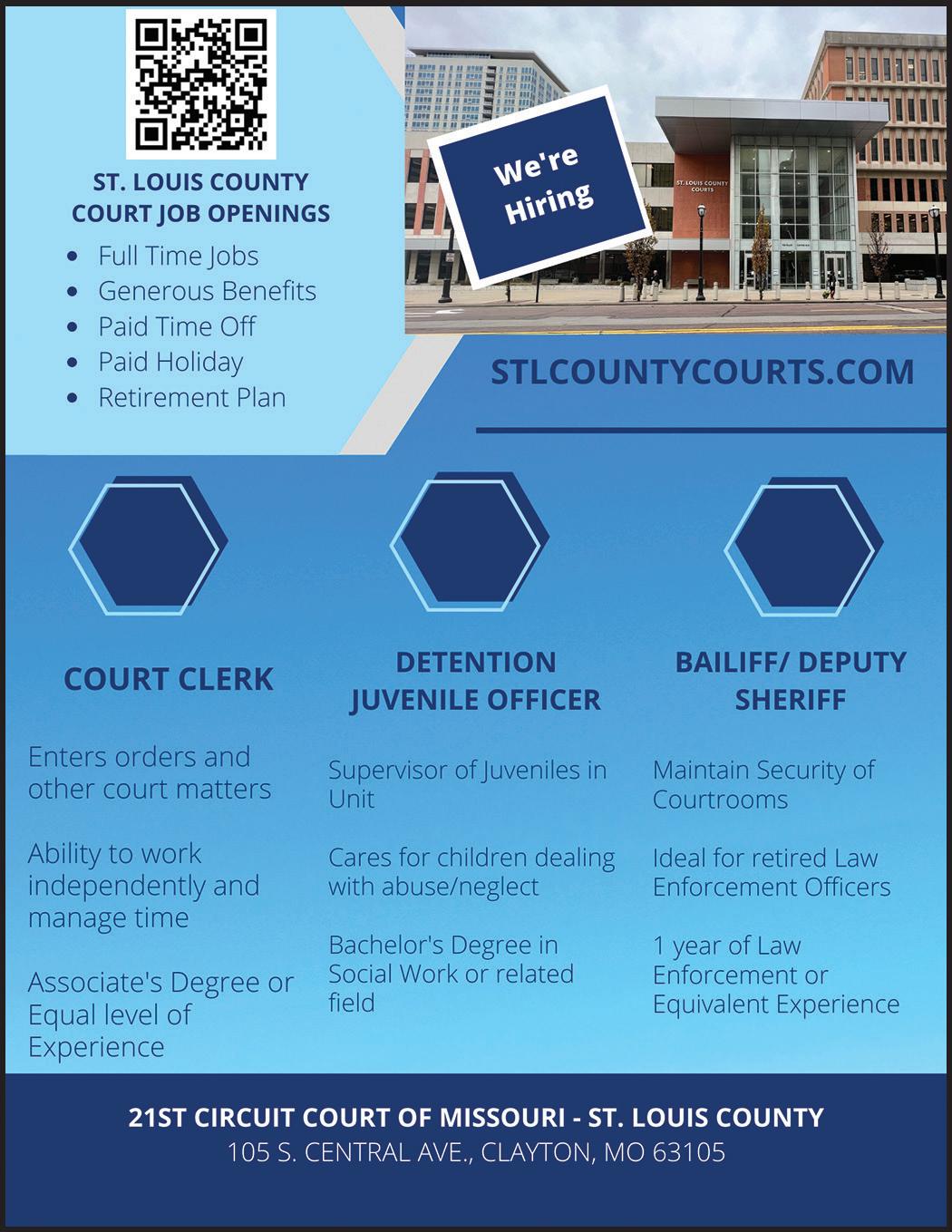

Food Outreach, a 501(c)(3) not for profit organization serving clients living with HIV or cancer, is looking for a full-time Registered Dietitian.
The Registered Dietitian works with Food Outreach clients to provide individual nutrition counseling and group education for clients and their caregivers. The Registered Dietitian reports to the Director of Program Initiatives and works closely with the Registered Dietitian and Diabetes Educator, Director of Client Services, the Chef, as well as program and development staff to implement and support organization programs and functioning.
This is a full-time, in-person position. Direct interaction with clients is necessary, and clients are expected to be treated with dignity and respect. Since our clients have compromised immune systems, strict COVID-19 protocols must be observed. Requirements include:
• 1 – 3 years’ experience in community nutrition, diabetes, HIV/AIDS, cancer, and/or similar health-related programming.
• Must be a Registered Dietitian (RD).
• Degree in dietetics, nutrition, or a related field.
• Maintenance of current professional registration required through CDR.
• Maintenance of current state licensure in both Missouri and Illinois.
Company’s Facebook page: Facebook.com\foodoutreach Website: www.foodoutreach.org
To apply, please visit: https://www.safetynational.com/ careers-page/
Week Ran: 7/20 – 7/27
Position Hiring For: SENIOR SMALL
BUSINESS ASSOCIATE
M-F 8 hour shifts
Salary Range: $50,000 - $60,000
Justine PETERSEN, a Non-Profit focused on credit building, homeownership, and microenterprise lending and training is accepting applications for a Business Assistance Manager, a Business Assistance Associate, and an Asset Building Counselor focused on Auto Lending. To apply go to justinepetersen.org/get-involved/ job-opportunities/
Please visit www.mohistory.org under the “Current Openings” at the bottom of the home page for position details and to apply.
Umetulisha, a local food ministry, is seeking a director. We are looking for applicants with the following experience and skills: budget oversight; working with a board; kitchen management; staff supervision, and a willingness to pursue development. Umetulisha is the food preparation ministry of New City Fellowship Church and Restore St. Louis. It serves more than 200,000 meals annually with a budget of more than $400,000. The ministry also needs a part-time cook. If interested, contact Andrew Stern: andrew@ncfstl.org
The City of Clayton is hiring for full-time positions. Apply at https://bit.ly/3pGDCgY EOE
PART-TIME VAN DRIVER
Food Outreach, a 501(c)(3) not for profit organization serving clients living with HIV or cancer, is looking for a part-time van/delivery driver.
The van driver is responsible for delivery of food items, some frozen, to our clients in their homes, pickup of items from donors, and other assorted pickup and delivery tasks using company vehicles. Direct interaction with clients is necessary, and clients are expected to be treated with dignity and respect. Since our clients have compromised immune systems, strict COVID-19 protocols must be observed.
Qualifications:
Must be fully COVID vaccinated Able to lift at least 50 lbs.
Previous driver/courier experience preferred Able to work independently
Excellent interpersonal skills
Employment subject to favorable driving record and background checks
Able to work in all weather

Sealed bids for the above project are being requested from the Cottleville Fire Protection District and will receive sealed bids until 2:00 p.m. local time; July 28, 2022, at Cottleville Fire Protection District Headquarters located at 1385 Motherhead Rd, Cottleville, MO 63304. Bids will be opened publicly and read aloud at the above address at 2:00 p.m. local time on the day of receipt. They may also be read aloud at a Board of Directors Meeting subsequent to the bid opening. A formal Pre-Bid Conference will held on July 19, 2022 at 9:30. Meeting location will be at the address listed above. All potential bidders are encouraged to attend but is not mandatory. Contract documents may be obtained from Custom Blueprint & Supply, 1632 South Broadway, St. Louis, MO., phone 314.231.4400. All questions are to be directed to LCS, LLC, attention Steve Layne. slayne@lcsconstruct.com
Electronic bids submitted through the Bid Express Online Portal will be received by the Board of Public Service until 1:45 PM, CT, on August 9, 2022, then publicly opened and read. Proposals must be submitted electronically using “Bid Express Online Portal” at https:// www.bidexpress.com/businesses/20618/home Plans and Specifications may be examined on the Board of Public Service website http://www. stl-bps.org (BPS On Line Plan Room) and may be purchased directly through the BPS website from INDOX Services at cost plus shipping. No refunds will be made.
An optional pre-bid conference for all contractors bidding on this project will be held at onsite at the existing Seven Pools Bridge located at 5032 Clayton Avenue, St. Louis, MO 63110 at 10:00 AM on July 19, 2022. All bidders are encouraged to attend the pre-bid meeting. Bidders shall comply with all applicable City, State and Federal laws (including MBE/WBE policies).
All bidders must regard Federal Executive Order 11246, “Notice of Requirement for Affirmative Action to Ensure Equal Employment Opportunity”, the “Equal Opportunity Clause” and the “Standard Federal Equal Employment Specifications” set forth within and referenced at www.stl-bps.org (Announcements).
Helix Realty is seeking proposals for bids for 28,000 sf of loft conversions. Scope of work includes Demolition. Carpentry, Drywall, Painting, Fire Protection, Plumbing, HVAC and Electrical and has diversity participation goal. Contact Stephen Levin 314 496-9150 slhelix@gmail
Electronic bids submitted through the Bid Express Online Portal will be received by the Board of Public Service until 1:45 PM, CT, on August 16, 2022, then publicly opened and read. Proposals must be submitted electronically using “Bid Express Online Portal” at https://www. bidexpress.com/businesses/20618/home. Plans and Specifications may be examined on the Board of Public Service website http://www.stl-bps.org (BPS On Line Plan Room) and may be purchased directly through the BPS website from INDOX Services at cost plus shipping. No refunds will be made.
An optional pre-bid conference for all contractors bidding on this project will be held at onsite at Laclede Avenue and North Taylor Avenue on the 2nd day of August, 2022, at 10:00 in the morning. All bidders are encouraged to attend the pre-bid meeting.
Bidders shall comply with all applicable City, State and Federal laws (including MBE/WBE policies).
All bidders must regard Federal Executive Order 11246, “Notice of Requirement for Affirmative Action to Ensure Equal Employment Opportunity”, the “Equal Opportunity Clause” and the “Standard Federal Equal Employment Specifications” set forth within and referenced at www.stl-bps.org (Announcements).
Bids for Replace Roof System, Multiple Assets, F a r m i n g t o n C o r r e c t i o n a l Center, Project No. C1922-01, will be received by FMDC, State of MO, UNTIL 1 : 3 0 P M , 7/28/2022 via MissouriBUYS. Bidders must be registered t o b i d . F o r specific project information, go to: http://oa.mo. gov/facilities
ST.
The Saint Louis Zoo seeks bids from qualified firms to submit proposals for Asphalt Sealing and Overlay RFP 2022. Bid documents are available as of 7/20/22 on the Saint Louis Zoo website: stlzoo.org/vendor
On Tuesday, November 8, 2022, the Castle Point Street Light District will vote to fill one seat (Six-year term) on the Board of Directors who operate and maintain streetlights in the Castle Point Neighborhood. Qualifications: Must be a current resident in the District., no taxes owed, (A tax affidavit must be filled out, notarized, and returned to the Board Secretary), must have a current Missouri State ID or MO Driver’s License. Interested residents must appear to file a Declaration of Candidacy. Candidate Filing will be held on Sat. July 30, and Sat. August 6 from 9:00 a.m. – 12 noon at the Lewis & Clark Branch Library -9909 (Hwy 367) Candidate filing will close Sat. August 6, 2022 at 12:01 p.m.
Solicitation For Bids (SFB)
Service: Emergency Generator Maintenance Services
Pre-Bid Meeting Date: August 2, 2022 1:00PM Meeting will be held via Zoom.
See SFB for details.
Question Due Date: August 3, 2022
Bid Due Date: August 30, 2022
M/WBE Goals & Incentives:
MBE goals: 21% - African American 2% - Hispanic American .50% - Asian American .50% - Native American WBE goal: 11%.
A five percent (5%) Bid discount shall be applied to construction, goods, and other services prime contracts on contracts $300,000 or less to prime African American, Hispanic American, Asian American, Native American and WomenOwned Business Enterprise Bidders.
Point of Contact: Gigi Glasper – gxglasper@flystl.com
Bid documents may be obtained at St. Louis Lambert International Airport, Airport Properties Division, Monday through Friday between 8:30 a.m. and 5:00 p.m., or by calling (314) 890-1802. This SFB may also be obtained by visiting our website at www.flystl.com/business/ contract-opportunites.
Robert Salarano Airport Properties Division Manager
Notice is hereby given that the Metropolitan St. Louis Sewer District Requests for Quotes, Bids and Proposals are posted online for public download. Please navigate to www.msdprojectclear.org > Doing Business With Us > View Non-Capital Bids (commodities and services) or >Visit Planroom (capital construction bids)
Metropolitan St. Louis Sewer District is an Equal Opportunity Employer.
COMMISSIONER VACANCY TO ALL ATTORNEYS RESIDING IN ST. LOUIS COUNTY, MISSOURI
The Circuit Court of St. Louis County, Missouri, announces that it is soliciting candidates for the position of Family Court Commissioner of the Circuit Court of St. Louis County.
The Circuit and Associate Circuit Judges en banc will make the appointment for a term of (4) years at an annual salary of an associate circuit judge, payable by the State of Missouri.
Missouri law requires the Family Court Commissioner(s) to possess the same qualifications as a circuit judge, including those set forth in the Missouri Constitution, Article V, Section 21, to wit, they must be qualified voters of the state for the three years preceding their selection, residents of St. Louis County, Missouri for at least one year, at least thirty years old, licensed to practice law in Missouri; and possess all other qualifications as required by law. (See Chapter 487 R S Mo.)
Questionnaires and Candidate Instructions may be obtained by sending a resume and cover letter to St. Louis County Family Court, ATTN: Human Resources, 105 S. Central Avenue, Clayton, Missouri, 63105, or via email to SLCCourtJobs@courts.mo.gov. Completed questionnaires must be submitted in writing to St. Louis County Family Court, ATTN: Human Resources, 105 S. Central Avenue, Clayton, Missouri 63105, or via email to SLCCourtJobs@ courts.mo.gov on or before July 31, 2022. The appointment is scheduled to take place upon a vote of the Court en banc on or about August 10, 2022. EOE. Please contact the Human Resources Department at 615-4471 (voice) or RelayMo 711 or 800-735-2966 if you need any accommodations in the application process, or if you would like this posting in an alternative form
New Construction of 31 multifamily units in Jennings MO. MBE/WBE/Section 3 subcontractors are encouraged to bid. (314) 292-6800 or office@housingplusllc.com
ST. LOUIS COMMUNITY COLLEGE
Will receive bids for CONTRACT NO. F 23 601, SC125 Reno, until 2:00 p.m. on August 11, 2022 at 5464 Highland Park, St. Louis, MO 63110-1314.
Project information may be obtained at https://stlcc.bonfirehub.com/ ; ePlan, the Builders Association and the Mid-States Minority Supplier Development Council. A pre-bid meeting will be on 07/28/2022 1:00pm in the SC 125 at the Meramec Campus.
You may have what it takes to be successful in the construction industry if you are…
- Dependable
- Someone that enjoys hands-on work
- Someone that works well in a team environment
- Someone that is looking for a career with room for growth
- Someone that wants to help build their community
Associated Builders and Contractors Heart of America is accepting applications for its Pipefitting and Plumbing Apprenticeship programs. All programs take place at our Eastern Missouri Training Facility.
To apply you must be 18 years or older, attend a scheduled orientation, and submit an application including the following documents in person:
Valid Driver’s License High School Diploma or Transcripts or a GED Certificate DD214 – Veteran Documentation (if applicable) Please visit www.abcksmo.org for more information and to complete an interest form in your trade of choice. Staff will contact you to schedule a time for you to attend an orientation.
All minorities, including women, are encouraged to apply. The recruitment, selection, employment and training of apprentices during their apprenticeship shall be without discrimination because of race, color, religion, national origin, sex, age, creed, disability or sexual orientation. All contractor members are Equal Opportunity Employers.
The St. Louis City Community Development Administration (CDA) and Mission: St. Louis seek responses to a Request for Qualifications (RFQ) from contractors interested in participating the Healthy Home Repair Program (HHRP). The program assists low to moderate income homeowners who own and occupy their home in St. Louis City. HHRP is designed to help homeowners stay in their homes, and preserves the homes by making code, health, and other safety repairs. HHRP is looking for the following qualified contractors to apply:
- Roofers
- Electricians
- Plumbers
- Heating and Cooling
- General Contractors for carpentry installations
- Radon mitigation
- Lead remediation and abatement contractors licensed in the State of Missouri
Contractors will go through a simple bidding process with ample opportunity to work with the HHRP. The program is funded annually, and prompt payments will be made to all contractors.
A copy of the RFQ can be obtained from Mission St. Louis’s website at https:// www.missionstl.org/. A contractor’s meeting will be held on Wednesday, August 3 at Forest Park Pavilion #8 at 10:00 A.M. A to explain the program and answer questions. RFQ submissions will be considered on a rolling basis, and contractors are encouraged to apply at any time throughout the year. Questions about this RFQ should be sent by email to kepstein@hhrp.missionstl.org; or can be answered by phone at (314) 771-5116, Ext. 10.
CDA and Mission: St. Louis do not discriminate on the basis of race, religion, color, disability, or national origin in the administration of the program. CDA is an equal opportunity Agency.
Minority participation is encouraged.

The St. Louis Housing Authority (SLHA) will receive Proposals for the following services: Scope of Services: To provide audit services for the St. Louis Housing Authority, Ascend STL, Inc. (a not-for- profit affiliate of the St. Louis Housing Authority), and Kingsbury Associates L.P. (a partnership and a blended component unit of the St. Louis Housing Authority) regardless of funding, in accordance with generally accepted auditing standards and Government Auditing Standards by an Independent Public Accountant. The audit shall be performed in accordance with Title 2 U.S. Code of Federal Regulations Part 200, Uniform Administrative Requirements, Cost Principles, and Audit Requirements for Federal Awards, Local Governments, and Non-Profit Organizations. The financial statements shall be prepared in accordance with the reporting requirements GASB 34, Basic Financial Statements – and a review of Management’s Discussion and Analysis – for State and Local Governments.
Proposals will be received until Monday, August 15, 2022 by 3:00 p.m. (local time/ CST)
Proposal documents will be available Monday, July 25, 2022 at https://www.slha.org/ for-partners/vendors/ or at www.questcdn.com under Login using QuestCDN #8243338. Contact QuestCDN.com at 952-233-1632 or info@questcdn.com for assistance in membership registration, downloading this digital project information and online submittal of your proposal.
A Pre-Proposal conference will be held Wednesday, August 3, 2022 at 10:00 a.m. via ZOOM.
https://us02web.zoom.us/j/85607607560?pwd=5kFj8vDSVcBo6CRuf75YQRgLYO0NLU.1
Meeting ID: 856 0760 7560
Passcode: 456045
You can also dial in using your phone: United States: One tap mobile +13126266799,,85607607560#,,,,*456045# US (Chicago)
For additional information or questions, contact Fran Bruce, Planning and Procurement Manager, by email at fbruce@slha.org or by telephone at (314) 286-4365 between the hours of 8:00 a.m. and 4:00 p.m. Monday through Friday.
Alana C. Green Executive Director
Notice is hereby given that The Metropolitan St. Louis Sewer District (District), the Owner, will receive sealed bids for Bissell - Coldwater - Missouri - Meramec Public I/I Reduction (2023) Contract C under Letting No. 13033-015.1, at its office, 2350 Market Street, St. Louis, Missouri 63103, until 2:00 PM, local time, on Tuesday, August 16, 2022. All bids are to be deposited in the bid box located on the first floor of the District’s Headquarters prior to the 2:00 p.m. deadline. Bids may, however, be withdrawn prior to the opening of the first bid. BIDS WILL BE PUBLICLY OPENED AND READ IMMEDIATELY AFTER THE BID DUE DATE/TIME AT 2350 MARKET STREET, AT A PLACE DESIGNATED.
The Work to be performed under these Contract Documents consists of: The work to be done under this contract consists of the rehabilitation of approximately 38,363 lineal feet of sewers, varying in size from 8-inches to 36-inches in diameter, utilizing cured-in-place-pipe (CIPP) methods, 28 manholes, 756 service connections, and 4 point repairs. The project is within the Metropolitan St. Louis Sewer District Boundaries, inside the city(ies) of Florissant in the State of Missouri. The work will be performed in various quantities at various sites.
All prospective bidders must prequalify in the Cured-In-Place Pipe (CIPP) category, and be certified prior to the Bid Opening. Prequalification forms for obtaining said certification may be obtained from the Owner at the above-mentioned address. All bidders must obtain drawings and specifications in the name of the entity submitting the bid.
This project will be financed through the Missouri State Revolving Fund, established by the sale of Missouri Water Pollution Control bonds and Federal Capitalization Grants to Missouri. Neither the Missouri Department of Natural Resources, its divisions, nor its employees will be party to the contract at any tier. Any Bidder whose firm or affiliate is listed on the GSA publication titled “List of Parties Excluded from Federal Procurement or Non-Procurement Programs” is prohibited from the bidding process; bids received from a listed party will be deemed non-responsive. Refer to Instructions to Bidders B-27 for more information regarding debarment and suspension.
Nondiscrimination in Employment: Bidders on this work will be required to comply with the President’s Executive Order 11246. Requirements for bidders and contractors under this order are explained in the specifications.
Plans and Specifications are available from free electronic download. Please go to MSD’s website and look for a link to “ELECTRONIC PLANROOM.” Plans and Specifications are also available for viewing or purchase at Cross Rhodes Reprographics located at 2731 S. Jefferson Ave St Louis, MO 63118. The Metropolitan St. Louis Sewer District is an Equal Opportunity Employer.
The Metropolitan St. Louis Sewer District is an Equal Opportunity Employer and invites the submission of bids from Women and Minority Business Enterprises.

Advertised herein is subject to the Federal Fair Housing Act, which makes it illegal to advertise any preference, imitation, or discrimination because of race, color, religion, sex, handicap, familial\status, or national origin, or intention to make any such preference, limitation, or discrimination.
“We will not knowingly accept any advertising for real estate which is in violation of the law.
All persons are hereby informed that all dwellings advertised are available on an equal opportunity basis.”



mated features – including the distinction of becoming Disney’s first Black fairy godmother with her role of Mama Odie in The Princess and The Frog
“She is joining the ranks and her name leaves an indelible mark for generations,” said Emmy Award-winning choreographer, director and producer Debbie Allen. “As we put her name in this marquee of greatness, we can only think of what all is yet to come. Because Jenifer Lewis is absolutely still in the making. Yes she is.” Lewis has appeared in more than 400 episodic television performances, with the most recent being the eight seasons she portrayed Ruby Johnson in ABC’s ‘black-ish.’
“I got a lot of comments on the internet – my favorite was, ‘It’s about damn time’,” Lewis said regarding the initial Hollywood Walk of Fame
never know who you’re influencing or inspiring. I had someone tell me they saw me and it made them think they can do it too.”
Mental health is slowly becoming a more talked about topic in Black communities. It’s receiving more attention in the pageant world now due to an increase in suicide rates. Last year, Cheslie Kryst, Former Miss USA 2019, and Miss Alabama Zoe Bethel’s deaths by suicide not only shocked the world but raised awareness on how critical it is to take mental health seriously.
Morgan’s focus for this year’s pageant aligns with
n Lewis has appeared in more than 400 episodic television performances, with the most recent being the eight seasons she portrayed Ruby Johnson in ABC’s ‘black-ish.’
announcement two years ago. “I want to thank you for your love and support. But what you don’t know, is that I just wasn’t ready. Because I had not done the real work. The real work was off stage and off camera.” Lewis directed them to her bestselling book, “The Mother of Black Hollywood” for those details – and suggested that they preorder the follow up, “Walking in My Joy: In These Streets,” which is slated for release next month.
She did, however, make a
health and wellness. She will tackle the impact of body dysmorphia and the social destruction of the plus-size Black woman.
“My focus relates to mental health because it’s about depression and not seeing yourself represented or being anxious about presenting yourself in public,” Morgan said.
She remembers a time when she was too scared to wear flipflops thinking her feet were too fat and she would get laughed at.
“I always think about myself when I go on stage,” Morgan said. “How would ‘Little me’ feel if she saw that? ‘Little me’ sees the things she’s always wanted to do and finally gets to see herself since she never saw that growing up in society and mainstream media.”
Morgan gives herself and
point to discuss her life’s latest chapter – a commitment to activism. “These are not dark times. These are awakening times,” Lewis said. “We have to be brave. We have to be brave and we have to be loud in that braveness.”
She made the most of every moment during the hour-long ceremony, even stealing a moment to compel others to become change agents by way of political engagement.
“Vote,” Lewis said repeatedly while signing autographs. “Y’all better get y’all’s [expletive] on that internet and register to vote! You hear me? Vote! They are taking your rights away as you sleep.”
She basked in the moment –and paid homage to the spark ignited by her rendition of “You Brought Me From a Mighty Long Way” more than sixty years before that launched her into Hollywood history.
“….So here I am, a little colored girl from a small town called Kinloch, Mo.” Lewis said. “And I will be etched in stone – right next to Katharine Hepburn.”
other Black women and girls advice on strengthening their confidence.
“Take that jacket off, it’s 90 degrees outside,” Morgan said. Stop covering up your face, there’s nothing wrong with how you look. No matter how many people say you shouldn’t wear that cause your arms are big or cause your thighs will rub together, don’t spend
Don’t
